#1988 acting career
Text

FATHER & SON: James Earl Jones with his Father Robert Earl Jones on Stage in the 1962 Production "Moon on a Rainbow Shawl."
Robert Earl Jones (February 3, 1910 – September 7, 2006), sometimes credited as Earl Jones, was an American actor and professional boxer. One of the first prominent Black film stars, Jones was a living link with the Harlem Renaissance of the 1920s and 1930s, having worked with Langston Hughes early in his career.
Jones was best known for his leading roles in films such as Lying Lips (1939) and later in his career for supporting roles in films such as The Sting (1973), Trading Places (1983), The Cotton Club (1984), and Witness (1985).
Jones was born in northwestern Mississippi; the specific location is unclear as some sources indicate Senatobia, while others suggest nearby Coldwater. He left school at an early age to work as a sharecropper to help his family. He later became a prizefighter. Under the name "Battling Bill Stovall", he was a sparring partner of Joe Louis.
Jones became interested in theater after he moved to Chicago, as one of the thousands leaving the South in the Great Migration. He moved on to New York by the 1930s. He worked with young people in the Works Progress Administration, the largest New Deal agency, through which he met Langston Hughes, a young poet and playwright. Hughes cast him in his 1938 play, Don't You Want to Be Free?.
Jones also entered the film business, appearing in more than twenty films. His film career started with the leading role of a detective in the 1939 race film Lying Lips, written and directed by Oscar Micheaux, and Jones made his next screen appearance in Micheaux's The Notorious Elinor Lee (1940). Jones acted mostly in crime movies and dramas after that, with such highlights as Wild River (1960) and One Potato, Two Potato (1964). In the Oscar-winning 1973 film The Sting, he played Luther Coleman, an aging grifter whose con is requited with murder leading to the eponymous "sting". In the later 20th century, Jones appeared in several other noted films: Trading Places (1983) and Witness (1985).
Toward the end of his life, Jones was noted for his stage portrayal of Creon in The Gospel at Colonus (1988), a black musical version of the Oedipus legend. He also appeared in episodes of the long-running TV shows Lou Grant and Kojak. One of his last stage roles was in a 1991 Broadway production of Mule Bone by Hughes and Zora Neale Hurston, another important writer of the Harlem Renaissance. His last film was Rain Without Thunder (1993).
Although blacklisted by the House Un-American Activities Committee in the 1950s due to involvement with leftist groups, Jones was ultimately honored with a lifetime achievement award by the U.S. National Black Theatre Festival.
Jones was married three times. As a young man, he married Ruth Connolly (died 1986) in 1929; they had a son, James Earl Jones. Jones and Connolly separated before James was born in 1931, and the couple divorced in 1933. Jones did not come to know his son until the mid-1950s. He adopted a second son, Matthew Earl Jones. Jones died on September 7, 2006, in Englewood, New Jersey, from natural causes at age 96.
THEATRE
1945 The Hasty Heart (Blossom) Hudson Theatre, Broadway
1945 Strange Fruit (Henry) McIntosh NY theater production
1948 Volpone (Commendatori) City Center
1948 Set My People Free (Ned Bennett) Hudson Theatre, Broadway
1949 Caesar and Cleopatra (Nubian Slave) National Theatre, Broadway
1952 Fancy Meeting You Again (Second Nubian) Royale Theatre, Broadway
1956 Mister Johnson (Moma) Martin Beck Theater, Broadway
1962 Infidel Caesar (Soldier) Music Box Theater, Broadway
1962 The Moon Besieged (Shields Green) Lyceum Theatre, Broadway
1962 Moon on a Rainbow Shawl (Charlie Adams) East 11th Street Theatre, New York
1968 More Stately Mansions (Cato) Broadhurst Theatre, Broadway
1975 All God's Chillun Got Wings (Street Person) Circle in the Square Theatre, Broadway
1975 Death of a Salesman (Charley)
1977 Unexpected Guests (Man) Little Theatre, Broadway
1988 The Gospel at Colonus (Creon) Lunt-Fontanne Theatre, Broadway
1991 Mule Bone (Willie Lewis) Ethel Barrymore Theatre, Broadway
FILMS
1939 Lying Lips (Detective Wenzer )
1940 The Notorious Elinor Lee (Benny Blue)
1959 Odds Against Tomorrow (Club Employee uncredited)
1960 Wild River (Sam Johnson uncredited)
1960 The Secret of the Purple Reef (Tobias)
1964 Terror in the City (Farmer)
1964 One Potato, Two Potato (William Richards)
1968 Hang 'Em High
1971 Mississippi Summer (Performer)
1973 The Sting (Luther Coleman)
1974 Cockfighter (Buford)
1977 Proof of the Man (Wilshire Hayward )
1982 Cold River (The Trapper)
1983 Trading Places (Attendant)
1983 Sleepaway Camp (Ben)
1984 The Cotton Club (Stage Door Joe)
1984 Billions for Boris (Grandaddy)
1985 Witness (Custodian)
1988 Starlight: A Musical Movie (Joe)
1990 Maniac Cop 2 (Harry)
1993 Rain Without Thunder (Old Lawyer)
TELEVISION
1964 The Defenders (Joe Dean) Episode: The Brother Killers
1976 Kojak (Judge) Episode: Where to Go if you Have Nowhere to Go?
1977 The Displaced Person (Astor) Television movie
1978 Lou Grant (Earl Humphrey) Episode: Renewal
1979 Jennifer's Journey (Reuven )Television movie
1980 Oye Ollie (Performer) Television series
1981 The Sophisticated Gents (Big Ralph Joplin) 3 episodes
1982 One Life to Live
1985 Great Performances (Creon) Episode: The Gospel at Colonus
1990 True Blue (Performer) Episode: Blue Monday
#james earl jones#black tumblr#black literature#black community#black excellence#blackexcellence365#actor#robert earl jones#stage actor
221 notes
·
View notes
Text

James Earl Jones (born January 17, 1931) is an American actor. Over his career, he has received three Tony Awards, two Emmy Awards, and a Grammy Award. He was inducted into the American Theater Hall of Fame in 1985. He was honored with the National Medal of Arts in 1992, the Kennedy Center Honor in 2002, the Screen Actors Guild Life Achievement Award in 2009 and the Honorary Academy Award in 2011.
Suffering from a stutter in childhood, Jones has said that poetry and acting helped him overcome the disability. A pre-med major in college, he served in the United States Army during the Korean War before pursuing a career in acting. Since his Broadway debut in 1957, he has performed in several Shakespeare plays including Othello, Hamlet, Coriolanus, and King Lear. Jones worked steadily in theater winning his first Tony Award in 1968 for his role in The Great White Hope, which he reprised in the 1970 film adaptation earning him Academy Award and Golden Globe nominations.
Jones won his second Tony Award in 1987 for his role in August Wilson's Fences. He was further Tony nominated for his roles in On Golden Pond (2005), and The Best Man (2012). Other Broadway performances include Cat on a Hot Tin Roof (2008), Driving Miss Daisy (2010–2011), You Can't Take It with You (2014), and The Gin Game (2015–2016). He received a Special Tony Award for Lifetime Achievement in 2017.
Jones made his film debut in Stanley Kubrick's Dr. Strangelove (1964). He received a Golden Globe Award nomination for Claudine (1974). Jones gained international fame for his voice role as Darth Vader in the Star Wars franchise, beginning with the original 1977 film. Jones' other notable roles include in Conan the Barbarian (1982), Matewan (1987), Coming to America (1988), Field of Dreams (1989), The Hunt for Red October (1990), The Sandlot (1993), and The Lion King (1994). Jones has reprised his roles in Star Wars media, The Lion King (2019), and Coming 2 America (2021).
Source: African Archives
175 notes
·
View notes
Text
The Harry Potter actor pays tribute to his “favourite human”, who died on 24 March, saying: “I miss her hugs.”
“Her passing has left a huge hole in our lives as a family,” he added.
Mrs Davis was also an actor, appearing alongside her husband in the final Harry Potter film in 2010, in which she played a goblin.
The couple, who lived near Peterborough, met on the set of the film Willow in 1988, before marrying three years later.
The Star Wars star described Sammy, as he called her, as his “most trusted confidante and an ardent supporter of everything I did in my career”.
She was a unique character, always seeing the sunny side of life she had a wicked sense of humour and always laughed at my bad jokes,” he said.
Davis said that with his wife by his side, he felt sure he could achieve anything, adding: “It was like having a super-power.”
“Without Sammy, there would have been no Tenable quiz show, no Willow series. No Idiot Abroad Series 3.”
He added it had been his wife who persuaded comedian Ricky Gervais to send him with Karl Pilkington for the travel series.
The couple’s children, Harrison and Annabelle, joined their father in paying tribute, saying “her love and happiness carried us through our whole lives”.
“Mum is our best friend and we’re honoured to have received a love like hers,” they added.
Davis played both Professor Flitwick and the goblin Griphook in all eight films in the Harry Potter franchise. He also played several characters in the Star Wars film series, and starred in both the Willow film and the 2022 sequel.
His wife’s other acting credits include the children’s series Through the Dragon’s Eye (1989).
Outside of acting, Samantha Davis and her husband founded the charity Little People UK in 2012 to help individuals with dwarfism and their families.
“She was passionate about helping people, without judgement. She had time for everyone and a genuine listening ear,” the Tenable host said.
Davis said in recent years his wife’s mobility had become impaired but she was “determined that it would not impact her quality of life”.
Disney, the network the Willow series was on, said Samantha was “beloved member of the UK film and TV community”, adding: “Our thoughts are with the Davis family during this difficult time”.
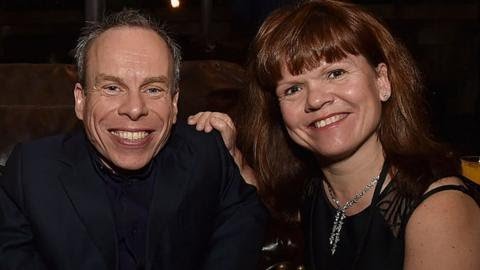
View On WordPress
29 notes
·
View notes
Text
Wikipedia Page
Planet Evans!Universe Masterlist
Word Count: 1.4k
Summary: pe!reader’s wikipedia page.
..
Y/N Y/L/N-Evans (born *birth month and day*, 1988) is a(n) *your choice of nationality* actress. The world’s highest-paid actress from 2010 to 2022, her films have grossed $9 billion worldwide to date. She appeared in Time’s 100 most influential people in the world in 2010 to 2019 and Forbes Celebrity 100 list from 2009 to 2022.
During her childhood, Y/L/N-Evans performed at local theatres until she was cast as the lead for Spy Kids at the age of 13, making the film trilogy her debut which gained her public attention. Y/L/N-Evans is an EGOT winner (Emmy, Grammy, Oscar, and Tony). She is a 3-time Academy Award winner, 4-time Golden Globes winner, 1-time Grammy award winner for Best Spoken Word Album (Including Poetry, Audiobooks & Storytelling) for being the official narrator of Where The Crawdads Sing (2018) by Delia Owens, and 3-time Emmy award winner, along with multiple and numerous nominations.
Her role as the committed dancer who struggles to maintain her sanity in Black Swan as Nina, won her the Academy Award for Best Actress, making her the fourth-youngest winner at the category at the age of 23. She also won the BAFTA Award for Best Actress in a Leading Role for the same movie, along with her role as Amy Dune from Gone Girl.
Y/L/N-Evans then again won the Academy Award for Best Actress for her role as Tiffany from Silver Linings Playbook, and her role as Cassandra in Promising Young Woman, along with Golden Globes award for Best Actress for the same roles.
Y/L/N-Evans identifies as feminist and children’s rights activist. In 2014, she founded Wish You Well Foundation, which advocates for children’s rights, wellbeing, as well as provides foster care for abused children.
Early life and education
Y/N Y/L/N-Evans was born on *birth month and day* in 1988, to *mom’s name*, a vet, and *dad’s name*, a trucker. She has one younger step-sister from her mother whom she constantly speaks about. Growing up, she was raised in an abusive household as it was later stated that her father was “hardly ever sober” and “physically violent” before her mother ran away with her when she was 10 years old.
Growing up, Y/L/N-Evans was fond of acting and costume design, and had often used her mother’s clothes and gave shows to her family from a very young age. She was a leading actress in her school drama plays throughout her academic journey.
Y/L/N-Evans was 12 when she was discovered by a talent scout who had watched her perform at a local theatre, later getting the role as Carmen Cortez in the Spy Kids trilogy alongside Antonio Banderas, although the actress appeared as “tie-dye girl” in The Parent Trap (1998) when she was 10 years old.
Career
Early roles and breakthrough (2001-2005)
Y/L/N-Evans began acting in local theatres before landing the role of Carmen Cortez in Spy Kids in 2001, aged 13, making it her debut film as well as debut trilogy. The trilogy received praise and public recognition, and Y/L/-Evans was praised by critics for having “a bright future ahead.”
At the age of 16, she was cast as the voice actor of Violet Parr, the eldest child of Bob and Helen Parr from Walt Disney’s The Incredibles (2004), who is born with the superhuman ability to render herself invisible, as well as generate force fields.
Y/L/N-Evans’s breakthrough role came in James McTeigue’s V for Vendetta (2005). The film features her as a young woman who gets involved in V’s life when he rescues her from a gang of London’s secret police. Y/L/N-Evans shaved her hair in a single take for the movie. Although the actress didn’t receive an Academy or Golden Globes award for her role, she was nominated for both and won many other awards for the role, as well as she received nothing but praise from critics and her acting wage was raised in the industry.
Worldwide recognition (2005-2012)
In 2006, Y/L/N-Evans took the role of Andy Sachs in The Devil Wears Prada by David Frankel, alongside Meryl Streep. The movie won her public appeal, as well as went down in history of “must watch” movies to date.
At the age of only 19, she took the role of Cecilia Tallis in Atonement (2007) by Joe Wright, portraying the lead and love interest of James McAvoy.
In 2009, Y/L/N-Evans took the role of Neytiri in $2.8 billion movie, Avatar (2009) which had made her the youngest highest-paid actress in the world.
It was in 2010, when Y/L/N-Evans, aged 22, was the talk of every critic, media platform and tabloid when she took the role of Nina Sayers in Black Swan, giving her her first Academy Award, Golden Globes Award, and BAFTA awards all for Best Actress.
The young actress then won the same awards again the following year for her performance as a troubled young widow in the romance film Silver Linings Playbook (2012), making her the highest-grossing lead actress in the world.
Established actress (2013-present)
The actress since then starred in high-grossing movies, including Gone Girl (2014), Inside Out (2015), Mad Max: Fury Road (2015), Bohemian Rhapsody (2018), Promising Young Woman (2020).
Y/L/N-Evans’s directorial debut was Lady Bird (2017), starring Soarise Ronan, Timothee Chalamet, and Laurie Metcalf. She was nominated for Academy Award for Best Director.
She then later was cast as June Osborne from The Handmaid’s Tale (2017), a woman who was captured while attempting to escape to Canada with her husband, Luke, and daughter, Hannah. Because Luke is divorced, their union is considered adulterous in this new society. June is considered an adulteress and their daughter, Hannah, is deemed illegitimate. Due to June's fertility, she is made a Handmaid to Commander Fred Waterford and his wife, Serena Joy as "Offred", and later to Commander Joseph Lawrence as "Ofjoseph". Y/L/N-Evans won 2 Primetime Emmy awards of Best Actress in a Leading Role for her performance.
In 2019, Y/L/N-Evans starred as Dani in Midsommar by Ari Aster, featuring a traumatized psychology student who's in a dysfunctional relationship that leads her to a midsummer festival that turns out to be that of a sinister cult. The role granted her not only praise, but public sympathy as the actress had said it was “an experience I [Y/N Y/L/N-Evans] needed to heal from.”
Personal Life
In 2007, Y/L/N-Evans was rumored to be in a relationship with a high school friend, Dean Tyler, but there was no confirmation.
From 2008 to 2011, Y/L/N-Evans was in a long-term relationship with, then, assistant director of Atonement (2007), Avi Newt. The two still follow each other.
While filming The Spectacular Now (2013) in 2012, she met Miles Teller, and the two got into a relationship which they went public with in February of 2013 when they were photographed kissing.
The couple was together from December 2012 to September of 2014, with Y/L/N-Evans confirming the breakup to a fan but saying “he’s an amazing person. It was mutual.” The two continue to be friends.
In March of 2014, Y/L/N-Evans met–now–husband, Chris Evans at Vanity Fair’s Oscars afterparty, with the latter saying in an interview that it was “a dream come true” to meet the successful actress.
It was in November of 2014 when they met again at a private party, hosted by Christopher and Jonathan Nolan in celebration of Interstellar’s release. Sources said that they spent the entire party together and exchanged phone numbers that night.
It wasn’t until November 2015 that the couple had gotten into a relationship and a month later, went public by getting photographed holding hands, kissing, and sharing laughs.
In June 2018, Chris Evans proposed and the couple announced their engagement through Instagram. They later got married in June 2019.
In June 2022, the couple announced that they are expecting their first child.
On September 25th, the couple announced the birth of River Jude Evans and Y/L/N-Evans announced an indefinite career break and leaving Euphoria as executive producer to focus on raising their son.
Filmography
The Parent Trap (1998) - Tie-dye girl
Spy Kids (2001) - Carmen Cortez
Spy Kids 2 (2002) - Carmen Cortez
Spy Kids 3 (2003) - Carmen Cortez
The Incredibles (2004) - Violet Parr
A Cinderella Story (2004) - Samantha “Sam”
The Pacifier (2005) - Zoe Plummer
V for Vendetta (2005) - Evey Hammond
Corpse Bride (2005) - Emily the Corpse Bride
The Devil Wears Prada (2006) - Andy Sachz
Atonement (2007) - Cecilia Tallis
Avatar (2009) - Neytiri
Julie & Julia (2009) - Julie
500 Days of Summer (2009) - Summer
Tangled (2010) - Rapunzel
Black Swan (2010) - Nina Sayers
Silver Linings Playbook (2012) - Tiffany
The Spectacular Now (2013) - Aimee Finicky
Oz: The Great and Powerful (2013) - Theodora
Gone Girl (2014) - Amy Dune
Interstellar (2014) - Brand
Inside Out (2015) - Joy
Mad Max: Fury Road (2015) - Imperator Furiosa
Hacksaw Ridge (2016) - Dorothy Scutte
Mother! (2017) - Mother
The Incredibles 2 (2018) - Violet Parr
Ocean's 8 (2018) - Daphne Kluger
Bohemian Rhapsody (2018) - Mary Austin
Little Women (2019) - Meg March
Midsommar (2019) - Dani Ardor
Soul (2020) - 22
Promising Young Woman (2020) - Cassandra “Cassie” Thomas
Avatar: The Way of Water (2022) - Neytiri
Television
The Office (2010) - Herself
Saturday Night Live (2015) - Herself (host)
The Handmaid’s Tale (2017-2022) - June Osborne
Peaky Blinders (2013-2019) - Grace Shelby (née Grace Burgess)
Ted Lasso (2020) - Herself
Scooby Doo and Guess Who? (2021) - Herself
Euphoria (2019-2022) - Executive Producer
Broadway
Annie (1997-1999) - Annie
My Fair Lady (2005-2007) - Aliza Doolittle
Mary Poppins (2012-2013) - Mary Poppins
Accolades
Y/L/N-Evans won three Academy Awards for Best Actress for her performance in Black Swan (2010), Silver Linings Playbook (2012) and Promising Young Woman (2020). She has won four Golden Globe Awards for Best Actress for Black Swan (2010), Silver Linings Playbook (2012), Gone Girl (2014) and Promising Young Woman (2020). She has three Primetime Emmy Awards; two for Outstanding Lead Actress in a Drama Series for her performance in The Handmaid's Tale in 2017 and 2021, and for Oustanding Guest Actress in a Comedy Series for her performance in SNL (2015). Y/LN-Evans won two BAFTA awards for her role in Black Swan (2010) and Gone Girl (2014) as Best Actress in a Leading Role. She won one Tony award for Best Performance by a Leading Actress in a Musical for Mary Poppins (2013). She also has won one Grammy award for Best Spoken Word Album (Including Poetry, Audiobooks & Storytelling) for being the official narrator of the bestselling book by Madeline Miller, Circe (2018). The actress has 17 People's Choice Awards, 12 MTV Movie awards, 4 Critics' Choice Awards.
#planet evans#planet evans universe#chris evans imagine#chris evans x pregnant!reader#chris evans x famous!reader#chris evans x reader#chris evans blurb
815 notes
·
View notes
Text
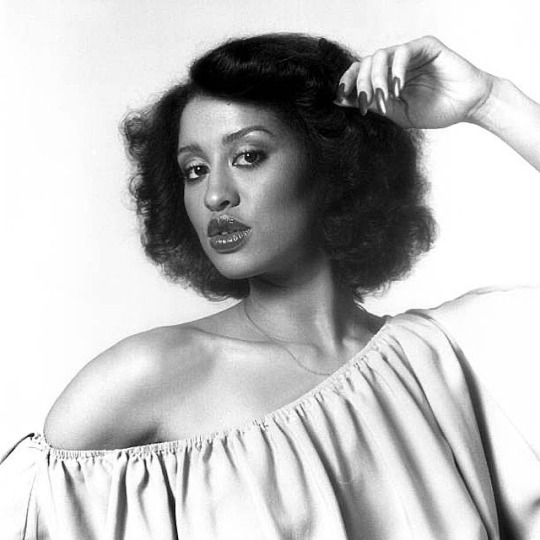
Today We Honor Phyllis Hyman
Phyllis Linda Hyman was an American singer-songwriter and actress, born in Philadelphia, Pennsylvania July 6, 1949. She was best known for her singles from the late 1970s through the early 1990s including: You Know How to Love Me, Living All Alone, and Don’t Wanna Change the World.
She performed on a national tour with the group, New Direction. Later she joined All the People while working with another group, The Hondo Beat. She made her acting debut in 1974 in the film Lenny. Hyman also led a group called Phyllis Hyman and the P/H Factor.
Hyman’s debut solo album named Phyllis Hyman was released in 1977 on Buddah Records. When Arista Records bought Buddah Records, she transferred to the new label and released four albums: Somewhere in My Lifetime (1979), You Know How to Love Me (1979), Can’t We Fall in Love Again? (1981), and Goddess of Love (1983).
She also performed on Broadway in the musical, Sophisticated Ladies, the tribute play for Duke Ellington. For that work, she received a Tony Award, nominated for Best Supporting Actress in a Musical, and won a Theatre World Award for Best Newcomer.
In 1983 Hyman recorded the song “Never Say Never Again” for the James Bond movie of the same name which starred Sean Connery but the song she recorded couldn’t be used for the movie soundtrack due to legal reasons. In 1986 Hyman released the album, Living All Alone, on the Philadelphia International label. She also appeared in the movies, Too Scared to Scream (1985), Spike Lee’s School Daze (1988), and The Kill Reflex (1989).
In 1991 Phyllis Hyman released the album, The Prime of My Life, on Philadelphia International, which was the biggest album of her career. It included her first number-one R&B hit as well her first Billboard Top 100 hit, Don’t Wanna Change the World. The album, her last released while she was alive, was certified gold by 1992.
Phyllis Hyman… One of the Greatest Artists of our Lifetime.
CARTER™️ Magazine carter-mag.com #wherehistoryandhiphopmeet #historyandhiphop365 #cartermagazine #carter #phyllishyman #music #blackhistorymonth #blackhistory #history #spikelee #schooldaze #staywoke
#carter magazine#carter#historyandhiphop365#wherehistoryandhiphopmeet#history#cartermagazine#today in history#staywoke#blackhistory#blackhistorymonth
132 notes
·
View notes
Text
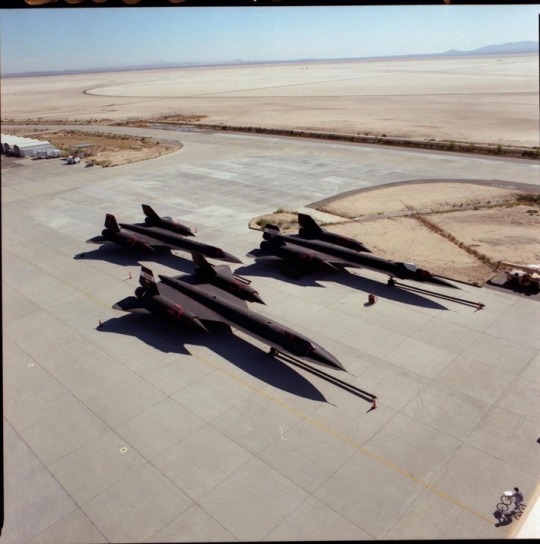
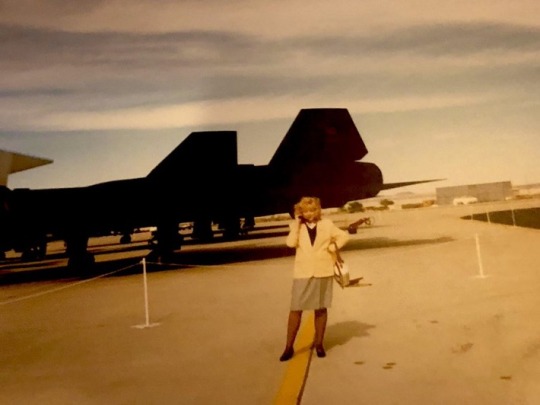
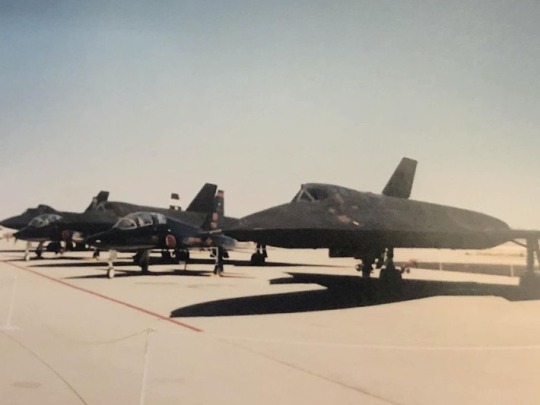
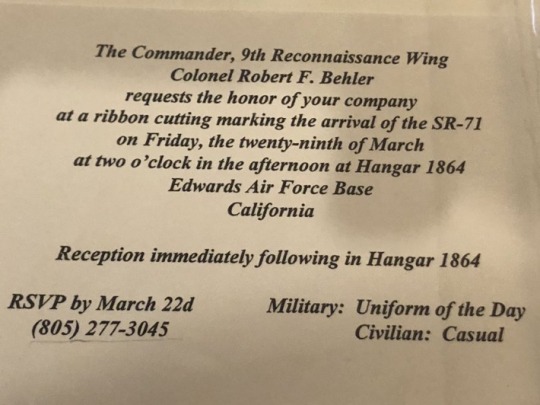
President Bill Clinton line-item-vetoed the entire SR-71 program. All operations except routine maintenance stopped. But then, in June 1998, the Supreme Court overturned the Line Item Veto Act.
While the SR-71 began its career in Asia, its reach would become global—gathering intelligence on targets in America’s backyard (Cuba, Nicaragua), as well as in the Middle East (during the 1973 Yom Kippur War and its aftermath, and at Benina Airfield in Libya after the 1986 El Dorado Canyon raid).
Peripheral SR-71 missions included those flown off the borders of East Germany, Poland, and the Soviet Union and later missions yielding radar images of Soviet submarine ports.
By the end of 1989, Air Force SR-71s had flown 3,551 operational sorties.
But in the late 1980s, even as SR-71s flew missions worldwide, its days as a reconnaissance platform appeared numbered. Key staff members of the House Permanent Select Committee on Intelligence, Air Force Chief of Staff Gen. Larry D. Welch, and Lt. Gen. Leo W. Smith II of the Budget Review Board all favored its retirement. They promised that they had a manned airframe in the wings that would replace the SR 71 in 1988. These Pentagon generals lied to Congress. Congress allotted money to bring the SR 71s back temporarily over the protest of the Air Force generals, who won the money for their own special projects, I was there at the ceremony when SR 71 #971 #967, and #956 shared by NASA, were to be reinstated into the Air Force in 1996. As everyone knows the Air Force Generals at that time, were determined to retire the SR 71 but NASA stepped up and used several SR 71s until 1999.. my Dad, Butch Sheffield was so upset about dirty politics that were used that he gave his invitation to myself and my husband and we went. They even had an SR-71 cake at Edwards while I was there I talked to Colonel Storrie and Colonel Ken Collins.. friends of the family and former SR 71 pilots.. pictures two, three and four were taken by my husband, Rodney Miller
@Habubrats71 via X
32 notes
·
View notes
Text
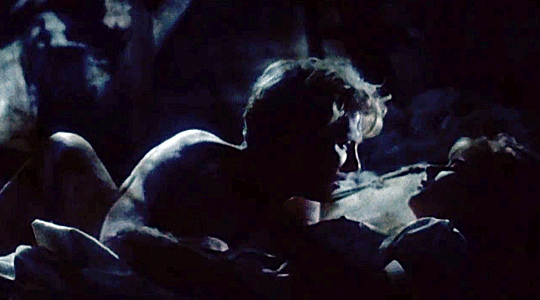

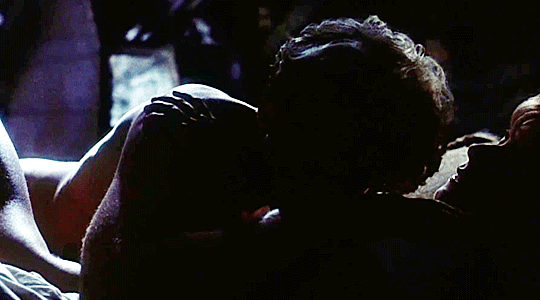
Manchester Evening News - Saturday 26 November 1988
James Wilby loves to play life dangerously. Never an actor to take the easy option, he didn’t work for five months after the award winning title role in Maurice.
It wasn't the film’s homosexual love scenes that kept him on the dole however. James's own lust for the right project to advance his career made him reject all the offers that poured in. “It just takes one bad film and it can put you back miles,’’ he says.
Now following the major success in the starring role of the classic story of A Handful of Dust, blond, handsome James Wilby is taking chances again.
Not content with dominating all the dashing British screen roles in the Jeremy Irons mould, he's starring in A Summer Story, a distinctly unfashionable love story in an age when violent cop thrillers and special effects films top the box office.
“The challenge -- and it is quite a challenge-- is to get the mood absolutely right,’’ he says of the turn-of-the-century West Country story.
“What’s interesting about a love story is not two people falling in love it’s two people falling in love, in a particular way. And it's getting that right.”
No time was it harder than in nude scenes played between James and his pretty co-star Imogen Stubbs in a freezing West Country river and a hay loft at dead of night with temperatures plummeting.
“You have to be relaxed because the camera picks everything, every tensing muscle. It’s not easy to be totally relaxed and gaze lovingly into somebody’s eyes with technicians standing around watching!
Born in Rangoon and after an itinerate early life in Burma Ceylon and Jamaica James eventually took up acting as a hobby while studying maths at Durham University.
His hobby turned into an obsession and he ended up being accepted by RADA, which in turn led him straight into the West End cast of Another Country, the story of spy Guy Burgess, which also launched the careers of Rupert Graves (Dance With A Stranger) and Colin Firth (Tumbledown), and a vital Equity’ card.
Following that run the die was cast and Wilby started getting calls for roles that demanded his fresh-faced public schoolboy look.
“Am I worried about being typecast in classical roles? Yes, but all my parts so far have been very different, it’s only journalists who want to lump them all together.”
After a day spent as an extra on the worldwide Merchant/Ivory hit A Room With View-- “I was furious, my agent was promised it was a speaking part,” -- he was offered the lead in E M Forster’s autobiographical Maurice.
“I’ve no regrets at all about doing Maurice,” says James, who despite not having a holiday in four years managed to take one day off from work marry his long-time girlfriend.
“I don’t think I’ll play such a fascinating role for years. You get one those that fits you like glove every years or once in a lifetime.”
#James Wilby#James Wilby Interviews#A Summer Story#James Wilby doing love scenes#Imogen Stubbs#Frank Ashton#Megan David#Archived Interviews#1988
37 notes
·
View notes
Text
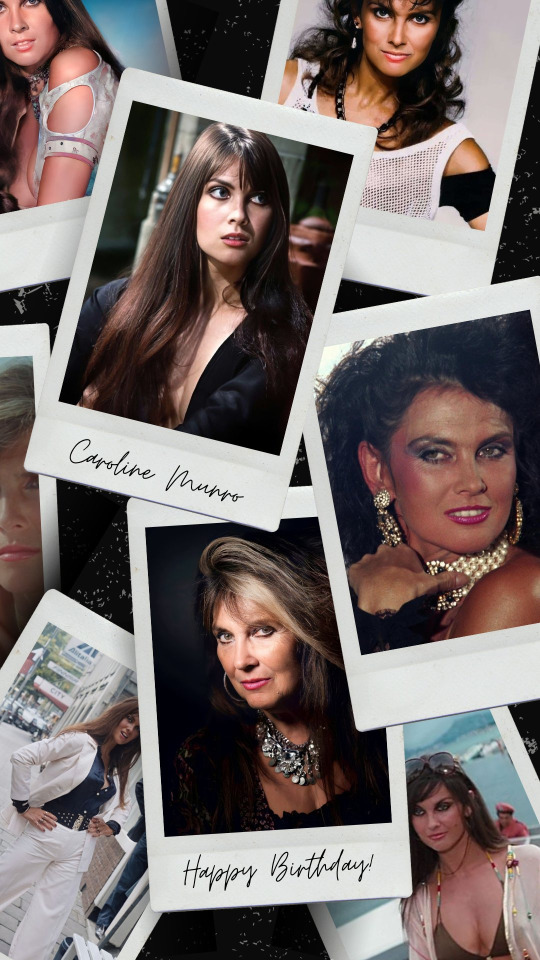
HAPPY BIRTHDAY CAROLINE MUNRO!
Caroline Munro (born 16 January 1949 in Windsor, Berkshire) is a British actress and model best known for her many appearances in science fiction and action films of the 1970s and 1980s.
According to Munro, her career took off in 1966 when her mother and photographer friend entered some headshots of her to Britain’s The Evening News “Face of the Year” contest.

“I wanted to do art. Art was my love. I went to Art School in Brighton but I was not very good at it. I just did not know what to do. I had a friend at the college who was studying photography and he needed somebody to photograph and he asked me. Unbeknownst to me, he sent the photographs to a big newspaper in London. The famous fashion photographer, David Bailey, was conducting a photo contest and my picture won.”
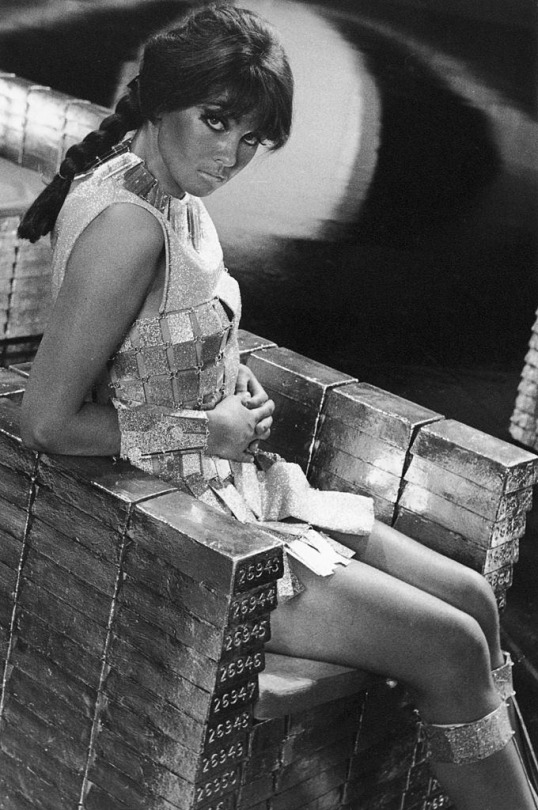
This led to modelling chores, her first job being for Vogue Magazine at the age of 17. She moved to London to pursue top modelling jobs and became a major cover girl for fashion and TV ads while there. Decorative bit parts came her way in such films as Casino Royale and Where’s Jack? (1969). One of her many photo ads got her a screen test and a one-year contract at Paramount where she won the role of Richard Widmark’s daughter in the comedy/western A Talent for Loving (1969).
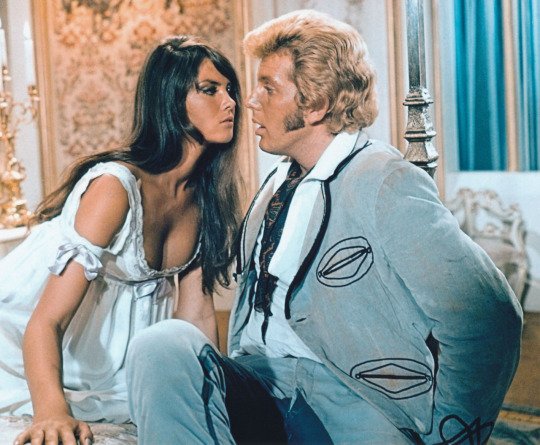
1969 proved to be a good year for Munro, because it was then that she began a lucrative 10 year relationship with Lamb’s Navy Rum. Her image was plastered all over the country, and this would eventually lead to her next big break.

Hammer Films CEO Sir James Carreras spotted Munro on a Lamb’s Navy Rum poster/billboard. He asked his right hand man, James Liggett, to find and screen test her. She was immediately signed to a one-year contract. Her first film for Hammer proved to be something of a turning point in her career. It was during the making of Dracula AD 1972 that she decided from this film onward she was a full-fledged actress. Up until then she was always considered a model who did some acting on the side.
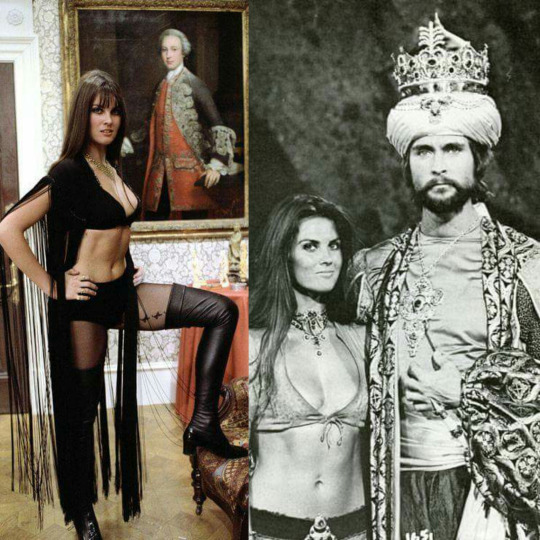
A string of fantasy and horror roles followed, including starring turns in Captain Kronos: Vampire Hunter (1973), The Golden Voyage of Sinbad (1974), At the Earth’s Core (1976), The Spy Who Loved Me (1977), StarCrash (1978), Maniac (1980), The Last Horror Film (1982), Faceless (1988), and The Black Cat (1989).
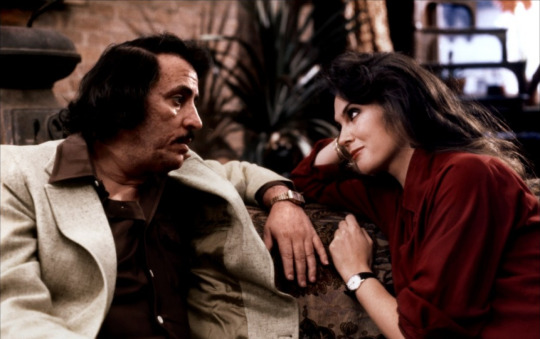
By the 1990s Munro had decided to focus more on her family, daughters, Georgina and Iona, and husband George Dugdale. However, since 2003 Caroline has renewed her interest in acting and has appeared in a number of film and audio productions. Since 2021 Caroline has been presenting the hit television series The Cellar Club for Talking Pictures TV.

The title First Lady of Fantasy was given to Caroline by journalist Steve Swires, who wrote many Starlog and Fangoria (@FANGORIA) articles on the actress in the 1980s and 1990s.
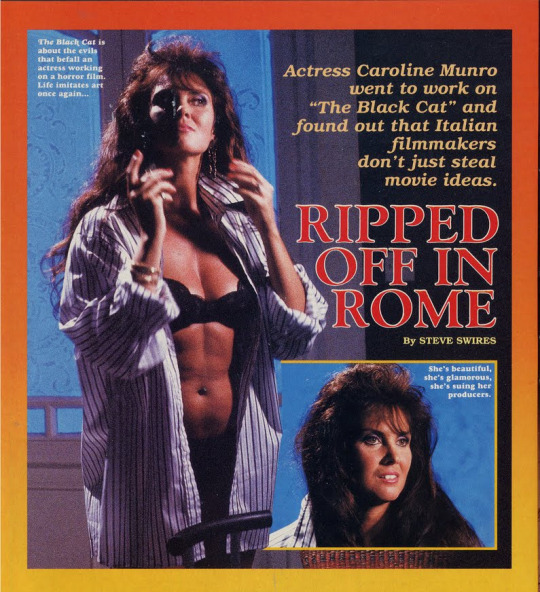
Happy Birthday Caroline!
Official Website: http://www.CarolineMunro.org
Representation: Thomas Bowington/Bowington Management
Some of her credits include:
Dracula AD 1972 (1972), Captain Kronos: Vampire Hunter (1973), The Golden Voyage of Sinbad (1974), At the Earth’s Core (1976), The Spy Who Loved Me (1977), StarCrash (1978), Maniac (1980), The Last Horror Film (1982), Faceless (1988), The Black Cat (1989), Flesh for the Beast (2003), Turpin (2009), Midsomer Murders (2013), The Landlady (2013), Crying Wolf (2015), Vampyres (2015), Cute Little Buggers (2016), Frankula (2017), End User (2018), House of the Gorgon (2019), The Haunting of Margam Castle (2020), Ulalume - A Ballad (2023), The Pocket Film of Superstitions (2023), and the upcoming The Presence of Snowgood (2024).
#Caroline Munro#Hammer Films#Amicus Productions#James Bond#Bond Girls#The Spy Who Loved Me#StarCrash#Jess Franco#Paul Naschy#Captain Kronos#Dracula AD 1972#The Last Horror Film#Slaughter High#Vampyres#Maniac#At The Earth's Core#Peter Cushing#British Actress#British Horror#BOTD#Doctor Who#The Golden Voyage of Sinbad#Ray Harryhausen
42 notes
·
View notes
Text
Kurt Bloch: An Awesome Guy Who Awesome People Like
Rocking with the Fastbacks and recording all your favorite bands since 1979
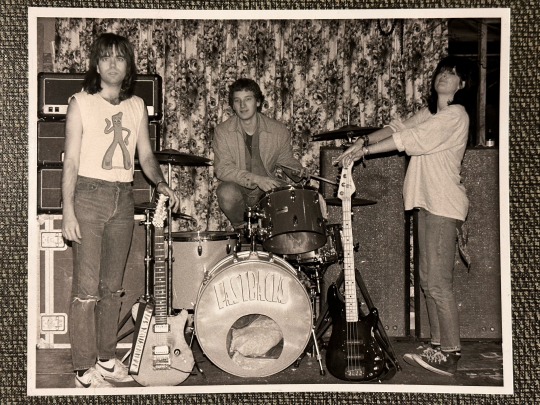
Fastbacks, 1988; Kurt Bloch far left, Gumby t-shirt
“There truly is something about inspiration and enthusiasm that really is inspiring and enthusiastic!” - Kurt Bloch
--------------------------------------
By: Eric Davidson
I’ve been thinking a lot about joy of late. Like pure, eyes-to-the-sky, skipping down the street joy. There is a paucity of it around right now.
We could follow a zillion trails to and from how we got here, but this is ostensibly a music blog, so I’m going to make a quick stab at the roots of this unenviably joyless position we’re sitting in, rock-wise.
The Fastbacks were joyful. Starting out in 1979 in the dawning days of Seattle’s punk scene, they became a local fave on the basis of action-packed shows stuffed with careening pop hooks, irked energy, and a friendly, guffaw around onstage demeanor that didn’t exactly scream “pre-hardcore era.”
Fastbacks retreated for a few years, circa 1988, and when kicked back into gear a couple years later, found themselves being a preferred opener for a load of grumpy grunge bands who I’m guessing hoped to absorb some of the Fastbacks positive energy to counteract their mope – which the Fastbacks were more than ready to supply.
A mélange of metal volume, fleeting bouts of prog whimsy, Ramones tempos, and BubbleYum stickiness, the Fastbacks created a singular sound. Like most great bands, they never fit into any particular zeitgeist – too raggedy for the pop punk contingent, too peppy for the grunge trend, they nonetheless retained a respected status among bands who appreciated their consistently grabby tunes and fun live show.
Despite any remaining expectations of what “success” was supposed to be, by the turn of the millennium the Fastbacks became that precious thing – one of those awesome bands that awesome bands like.
It should be noted that, while grunge soon gained a definition as a downer genre (that has taken root since), Bloch and company palled around with that Seattle scene from the get-go, and knew many of them as fun rocker kids just trying their best to get through seven months of rain by rocking.
The Fastbacks kept careening forward right through the ‘Alternative Rock” era that ignored all the fun underground garage punk and instead painted rock as increasingly dreary and grievance-based. The early 2000s came, and the Fastbacks took their leave.
They’ve recently gotten back together for occasional reunion shows. Always holding them together throughout their stop/start whirlwind of a career was ace guitarist/producer and philosophical center of the band, Kurt Bloch.
Bloch, who began his career as a recording studio whizz with Fastbacks, never stopped twiddling the knobs for lots of your favorite bands and/or underrated acts. We checked in with him on his ongoing mission to bring fun to the fringes despite the mainstream consistently choosing incorrectly.
-------------------------------

Kurt Bloch, rockin', 1990 (Fuck the NRA. I will assume Kurt's t-shirt here was de rigueur '90s irony.)
-------------------------------------
What was the first album you loved; and what was the first album you loved because of its production?
Good question, hard to answer. I think it was 45s and AM radio that got me going on recording qualities, how loud some of the great hits of the early-’70s sounded. How some records sounded like they were a band playing inside your head. I think I was aware of EQ and compression sounds early on, how the drum fills would sort of obliterate everything behind it on some songs. How the guitar would be so loud in the breaks. How, if the record didn’t have enough treble, it would be unexciting; if there was too much then it’d sound wimpy.
Then getting into albums, and FM radio, you’d listen to Larks’ Tongues In Aspic or Dark Side Of The Moon, and they had this spacious quality that was rad; the Scorpions’ Fly To The Rainbow was right in your face, really up-front and close. Then, going to see bands live, we’d see the coliseum style shows – that was so cool, but then getting to see bands in smaller spaces where you could hear the amps on stage, and feel the sound pressure in the room –now that was a mind-opener. You could feel the Marshalls and the actual sound coming off of the stage.
Then when punk bands started playing, that’s when it started getting interesting. You know, like I just saw this killer band that sounded so great at the show, and their record sounds like a bowlful of shit. Why?! That leads to one-track, two-track, four-track tape recorders, and each time you record something, you have a whole book of revelations of what to do and what not to do. So many great recordings from that early punk era without a bunch of reverb. It was another revelation. A lot of those early digital reverbs that everyone had, I just hated that fake trebly, scritchy sound. Rather just not use any reverb than that icky sound.
How did the Fastbacks form?
Kim and Lulu were high school friends of ours, The Cheaters was our neighborhood band; only lasted a couple years but they were good ones! When that band disintegrated on-stage, there was still band gear in my parents’ basement. Kim (Warnick, bass/vocals) had been in a band, The Radios, and Lulu (Gargiulo) wanted to play guitar and sing. Somehow my parents didn’t put a stop to it all, so we started playing a couple times a week. Not saying we got good, but we got better.
youtube
How long before you felt you had locked into the Fastbacks’ sound?
I reckon whatever “sound” we had was pretty well established early on; it was just whatever we wanted to do. Of course we loved the punk bands of the era first and foremost, but also the ’60s and ’70s pop music we grew up with; and the hard rock bands of the ’70s too! And I always was a fan of the wonderful arrangements and sound of the ’70s prog bands, once I started writing most of the songs, these things would creep in.
youtube
Live, 1986
I have this romantic vision of Kim Warnick as a long-haired rocker teen crashing parties and such. Is that correct?
Ha ha ha!! We were all pretty good (bad?) at crashing parties, some of the shit we did makes me wince thinking of it all. But it was 1977, ‘78; things were different back then, a different kind of boredom ran rampant through kids’ minds back then. There was a real disdain for society, maybe not to the degree of the UK bands at the time, but still there nonetheless. Often there was nothing to do other than the proverbial let’s go fuck shit up. And the music was such a part of all that.
So you got a story about something back then that would make you wince now?
Back when we were teenagers in The Cheaters, we would go to pretty desperate lengths to create excitement. The Cheaters singer, Scott Dittman, was maybe the funniest person I’ve ever known, and often in our search for something to do, he would drive a car full of us down to the frats at the University Of Washington. We’d go crash frat parties, rarely did we fit in unnoticed. You’d grab some keg cups and try to hang out, usually immediately, “Would you please leave.” And that didn’t often sit well with Scott. If we were going to “please leave” then we would not leave without exacting some sort of a toll. I guess we could run pretty fast, or we would’ve got our asses kicked pretty well back then. Somehow a few weeks later we’d go back to the same frat house that had a bookcase upended or a row of bikes knocked over, and lo and behold, the same thing would happen again. Of course we were never hired to play any frat parties.
Scott also loved to fight. He took boxing lessons and was always trying to teach us how to fight too. You knew when the gloves came out it was time to find something else to do. “Come on, you just gotta keep your guard up.” (smash smash smash) “You said you weren’t gonna hit us in the face.” Yeah right.
The Cheaters and The Accident (another erstwhile punk outfit) set up a show at a non-punk bar, somewhere down by Olympia. This would’ve been 1979 maybe. There were no roadmaps for like-minded or “friendly” places to play, outside of the major cities. But we were trying to do something, anything, and our double bill got the booking. This bar had a dance floor that also was used for bar fighting. There must have been some sort of organization to the fights, but it was sanctioned bar fighting. No-one was on the dance floor or anywhere near it when we started, so Scott tried to solicit a fight or two during our set. This was unfriendly territory, we were all, “Stop this nonsense!” But once you told Scott not to do something, well he was going to double down of course. Fortunately no one took him up on his offers, and we got out unscathed, but the bar owner took me into his office at the end of the night and gave me a rundown on what we needed to do to become successful in the music business, and the first thing was to get rid of that singer.

1978
First Fastbacks show, February, 1980 – any memories of it?
Oh, totally! The first Fastbacks show, it was at a rec center in a quiet neighborhood, it was three bands: The Vains, Psychopop, and The Fastbacks. We were all friends, and it was all three bands’ first shows. Very ramshackle, but we cobbled together a sound system, someone had a few lights, everyone brought what they had, and the show went on. A little rough around the edges, but the power didn’t go out, no cops were called, nothing was ruined – an early triumph for sure.
Was the power pop zeitgeist of that time a thing for Fastbacks? Did you feel a part of it?
No! For sure the New Wave was hitting strong at that point, but we were certainly not embraced by the new wavers at all. I suppose for that first year, we were pretty terrible, but we had some friends and people who wanted to give us a chance. Getting Duff (McKagan – yes, that one from Guns ‘N Roses) to play drums was the first step into making the band more listenable, but we were still a long ways off of what the general public would consider valuable music. We got kicked off of a show after our first set (of two). “That’s okay, you guys don’t have to play another set.” And I was all, “What do you mean we don’t have to?!” Oh, I get it.
Then when the hardcore bands cropped up, we were pals with some of them, but we weren’t furious enough for them really. I recall some sort of fury at a DOA/The Fartz/Fastbacks show. It required some foresight, which many didn’t possess, to support any kind of music that wasn’t 100% punk. Conversely, the proper power pop bands, well, we were a little too power and not enough pop, I reckon. We wanted to be that, but it’d take a bit still to hone those chops.
Had Duff McKagen played in any band before that?
Duff was the bass player in The Vains, who played that Laurelhurst Rec Center show. That was his first show. He must’ve been 15, barely 16?
Did he exhibit behaviors that would later align with Guns ‘N Roses’ infamous lifestyle?
We were still pretty reeled-in at that point, no one really even got plastered, no one started doing drugs yet. Might’ve been some Budweisers around, but nothing stronger yet.
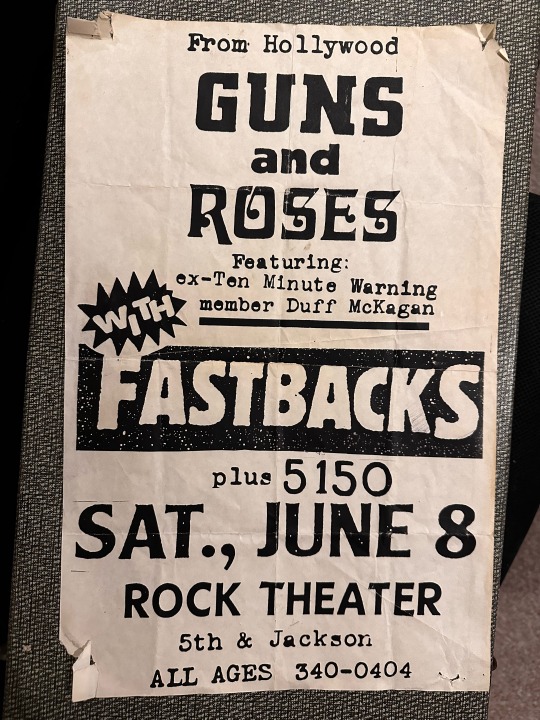
Guns 'N Roses 2nd show, 1985
Got any Vains stories, recollections of a show, or the general scene from whence they came/played? Was there a good raw, original punk scene in Seattle in late '70s? I'm aware of Soldier and some other bands, but I wanna get it from the horse’s mouth.
The Vains only played three, maybe four shows total. In the late ’70s into early ’80s it was pretty hard to keep something going if you were any sort of impatient. Most bands never got the chance to play enough to iron out any difficulties, or taste any sort of real success. Lots of arguing over what direction to take, stick to your punk rock guns, and play to a rental hall of your friends; or try to get “jobs” in the bars, which would mean being stricken with the “cover band” tag, which was NOT punk.
youtube
1978
The Enemy worked the hardest, yet still couldn’t crack the code in 1979. The Telepaths, The Blackouts, The Lewd – everyone broke up, or moved away and then broke up. The Fartz made a pretty good go of it, but even they sorta morphed into Ten Minute Warning, and then morphed into an art band… The Silly Killers stayed pretty punk. The Living ripped it up for their short lifespan. But they were all in that 1982 dilemma, you can almost see a line in the sand, drawn in the summer of 1982. Not a lot of bands made it across that line that summer.
youtube
The Enemy live, 1980
If I remember it was some sort of divine intervention that The Fastbacks reconvened in 1983 to fire it up again, it was nearly the end of the line. But it was also clearly a new beginning, a new lease on life, a new crop of kids started bands in those Metropolis years; the Metropolis was a new all-ages venue that I would consider the petri dish of the next bundle of bands.
As the ‘80s took hold and punk rock hall shows were sort of the only stage for many of our bands, after a couple years of not getting to any sort of next level, it was clear that there needed to be a re-grouping of some sort. We’d see our friends’ bands get actual paying gigs in bars – if they were non-punk sounding. Of course many of the punk bands went to the dark side of ’80s metal. Everyone was looking to do something that could “go somewhere.”
Somewhere right in that 1982 corridor, drugs started flourishing, stupidity set in. Duff came with us Fastbacks as a “roadie” in 1984 down to L.A., and when we came back I reckon he moved to L.A. to escape that whole rigamarole. No one was getting anywhere here anyway. A bold move at that time, at the advanced age of 20!
youtube
1987
Word is Fastbacks have had between 12 and 20 drummers. Short of naming every single drummer, are there a few you’d like to point to as having had a particularly interesting stint; or who went on to other bands?
Gosh, all the Fastbacks drummers had something great about them. There were a few who only did one show. I publicly apologize to those who didn’t last. Those were strange times. I don’t think there are any unsolved mysteries in the Fastbacks drummer world, Dan Peters, who recorded a couple songs with us but no shows, Tad Hutchison, and Tom Hendrikson, who each did one show…. Some convoluted moments for sure, and all killer drummers!
Do you think if you would have remained drummer for Fastbacks that you would have still gotten into production?
Yeah, I think the fascination with recording was parallel to the live playing side of things, it was always there in my constitution. Wanting to learn, wanting to figure out how to make records that captured how killer bands sounded. It was such a tall order back then. Seemed like the old guard [engineers] didn’t “get it,” or were prohibitively expensive; and so many of the others didn’t sound kickass like we wanted. Of course this comes from the actual band, first and foremost; that is learned the hard way! But if the band blazes at their show, it seemed that their records should sound blazing too, but that wasn’t often the case.

1988
youtube
1989
From what I remember, the Fastbacks rep was that of the favorite local band of all the Seattle bands, and hence got on as openers for bands who would soon get huge during that whole grunge thing…
Pretty hard to say from the inside view. We had the unfortunate hurdle of being broken up from late-1988 till mid-1990. A lot of opportunity probably squandered during those times. But, unlike anyone else I can think of, we did get a second chance via Sub Pop, and another decade of rock. I know we were quite lucky in that department. We never did gigs large or small with Nirvana, Soundgarden, sort of the class of ’89. We did share a slightly miserable practice space with Green River and later Mother Love Bone. Always pals with those cats, so we did do opening stints with Pearl Jam in 1996, all around the world.
What was miserableness about it?
Oh man, that place… It was in a basement in Pioneer Square, the old, original downtown Seattle. The Great Seattle Fire devastated downtown in like 1889, and they rebuilt the city on top of the old city, one floor higher. So our basement was on the level with the old, original city; some rooting around could be done. There was no bathroom or running water down there, so you had to go to the bar a block away to use the facilities, but often you just couldn’t be bothered. In the space next to ours, it was a smashed up, decrepit old room that we moved all the garbage from our side into. No lighting of any sort, so it was all flashlights if you had them, and filling up bottles of pee and putting them where ever we could find room.
But of course we raged supreme down there, some epic parties, bands playing, and whatnot; of course no water or facilities, but grand times in the ’80s. Somehow, I ended up being in charge of paying rent, not the best job for me to take on. It meant tracking down Andrew Wood once a month and trying to get him to pay his share of their rent. First it was Malfunkshun, and Green River was there too. We might’ve blown up before Mother Love Bone started? I think I remember Green River blowing up too, after their California trek; it would’ve been not too long after that that The Fastbacks unceremoniously imploded. But for a while it was definitely a rager.
-------------------------------------
Nifty, random link I stumbled on with some cool early Fastbacks fliers, stories, and live stuff.
-------------------------------------
youtube
1992
While you didn't play with the "biggies" of the scene as much as I thought, got any early Nirvana or Soundgarden tale of any sort you'd like to share?
Our fabled practice basement was just a couple blocks from The Central, a venue that was sort of home base for a lot of stuff. The Vogue as well, it was on the north end of downtown, we were on the south end. Many people had keys to the place, so it was not surprising to duck in between sets at The Central, to have cheap beers or whatnot. I first saw Soundgarden at The Central, and they were certainly mind-blowing. Would’ve been ’87? Quickly became a favorite Seattle band, and when their first 7” came out, my roommates hated me. I had a tendency to play those 45’s over and over and over again. But they played The Central a lot, and just got better and better, heavier and heavier. I remember the first time they played “Beyond The Wheel”, it was at the Vogue. I was standing next to Mark Arm and we looked at each other and just said FUUUUUUUUUHHHHHHHHH…
The first Nirvana show I saw was also at the Vogue, it was maybe not the greatest Nirvana show, but man I thought that singer was amazing. Shortly after, Jon Poneman (Sub Pop co-founder) was at the bar there and said, “If you buy me a coffee now, I’ll give you a 45 tomorrow that will change your life.” An easy proposition. Sub Pop HQ was half a block away, he gave me a “Love Buzz” 45, and once again, the roommates had a reason to hate. I must’ve played that record 100 times in a row. Might’ve taken them a bit to find their pummeling style, but man they sure did. Then after Bleach had been out a while, all the rumors of major label this and major label that… So exciting and weird.
Who is a favorite Seattle “grunge era” band you really dug and maybe didn’t get the recognition you think it deserved? Mine are the Derelicts and Zipgun.
Of course! Pure Joy, Flop, H-Hour, the Meices – wait they were actually from SF… Huge Spacebird, Once For Kicks…. Have you got an hour or so?!
I know you are no doubt tired of this question, but do you have a late ‘80s/early ‘90s story or show that happened where you thought, “Damn, this Seattle scene thing is getting some real attention? This is fucking weird.”
After the Fastbacks blew up in 1988, I started playing with the Young Fresh Fellows, and we were off and running pretty hard right away. Certainly a parallel path from the Seattle Grunge Explosion, but a decent path it was! I was pals with Jon and Bruce (Pavitt) at Sub Pop when they started, so I’d go hang out at their early HQ/distributor place downtown. It was amazing to see some of these bands blow up when they did.

Young Fresh Fellows, 1989; Kurt Bloch far right
I suppose the thing that sealed it for me was listening to the advance cassette of Nevermind on a Young Fresh Fellows trip. Scott McCaughey had been assigned to review it for local music rag, The Rocket, and I nabbed it from him on a trip out East. It totally blew my doors wide open. Already having been a superfan since that “Love Buzz” 45, and seeing a couple of the shows they did here before going out to record that album, then hearing it for the first time on headphones; then as our tour progressed, seeing the record just going ballistic at every record store, it was just crazy. It never stopped getting bigger and bigger. This is so fucking weird!
Strange feeling of seeing a local band you saw shlubbing around town or peeing next to them at a dive, to hearing them play in a grocery store in Nevada, or whatever....
Soundgarden was the first one I remember blowing up. They went from Sub Pop to SST to A&M – they sorta seemed to have their shit together pretty well. Alice In Chains were kinda off our radar, they were only on the Rock radio stations; it wasn’t until their second album that I noticed that they actually were killer. But Nirvana, they were crazy cool from the get-go, not in the FM Rock station sort of way, but the punk underground sort of way. Plus I didn’t really know them at the beginning, so there was way more mystery about them. A couple legendary Seattle club shows before they went off to start Nevermind; the OK Hotel first playing of “Smells Like Teen Spirit,” we were just transfixed – What the fuck is this?! Then the Off Ramp show, they went on really late, and got cut off right before 2am. Somehow the club picked up the empties and let the band play on into the night, and what a show it was. Then… nothing.
Didn’t really hear anything from Nirvana ‘til the advance cassette of Nevermind went out, and of course thinking, if I like this so much, it’s probably never gonna go anywhere. Wrong. It was like a slow ball of fire, radio then record stores, like every record store playing it, every magazine… It would’ve made you hate a lesser band, but it really was great so there was a sense of pride attached to it all. Finally something we loved is big. But then how big? There seemed to be no end to it. It was everywhere. And so weird to think that kids dug something that was blazing and amazing.
Were you defacto producer of Fastbacks from the get-go of recording?
Oh for sure. Not by strong-arming anyone, but just because there was no money, and no one else could be bothered! Our first 45 was with Neil Hubbard and Jack Weaver, as we were doing a song for a Seattle comp LP, and as per the usual, just recorded some extra songs in our allotted time. The first EP was Peter Barnes, drummer for The Enemy, killer Seattle band and very much an inspiration to all the bands in the late-’70s in Seattle. Then after that, it was trial by fire.
Can you tell me more about The Enemy, and their local import?
The Enemy pretty much initiated the punk “scene” in Seattle. There were a few bands, but they started a club, it was all ages, March, 1978. Otherwise it would’ve been hall shows, but The Bird brought everyone together. Originally only open for a few months, but there were shows there every Friday and Saturday, it really did give us something to do.
My first band, The Cheaters, might not have actually played anywhere if not for them. We could have languished in my parents’ basement forever if not for being stopped by The Enemy members at a Ramones show: “Hey! Are you guys in a band? Would you want to play at our club we’re opening up in a few months?” Of course we said yes, we didn’t tell them that we were just barely a band, we’d never actually played a show, nor would we maybe ever had if not for their offer. We were just teenagers, my brother Al was still in High School. But they took us in and let us play shows. The drummer, Peter Barnes, filled in for a night our real drummer couldn’t play.
Everyone knew each other, when it was time to record what was to be The Fastbacks’ first EP, Peter volunteered to be our producer. He figured out how to get cool, kickass sounds and make things happen. No one had any money or experience so it had to be on a budget, but he made it happen. The record turned out great. “In America” was on the commercial new wave station, we thought we had it made!
I thought I knew what to do, to various degrees of success. Conrad Uno at Egg Studio did much of our first album. He was wise beyond words and also a great teacher. After that LP was finished he was all, “You can do all this, I think, I’ll be back at the end of the night to close up!” Then it seemed like the right avenue. So many producers seemed like they just wanted to add stuff in order to have their presence be felt. I always felt, like – what is the least amount of stuff we can have on here to make it happen? Less stuff, but louder. Certainly not against adding things, but also happy to leave things out as much as possible. Always loved the one-guitar bands that didn’t double everything all the time. Makes you think a little harder about what you’re doing.
youtube
1994
Okay, I will name a band, and you give me the first thing that comes to mind when you think of your production gigs with them:
Presidents of the U.S.A.
We’d do several takes of any given song, as the band was learning them, Chris (Ballew, singer) would play his two-string bass flawlessly every take, and sing a scratch vocal that could’ve been used as the keeper. Never a mistake, never less than killer every time.
Robyn Hitchcock
Also just an amazing music machine. Put him in an iso booth with a mic for vocal and one for acoustic guitar. He’d show the band a new song and go into the booth, sometimes it would just be one take and they’d nail it, with the lead vocal included. Never a lyric sheet in sight. A brain that truly works overtime. Peter Buck playing his 12-string on a song that he had just heard, and plays flawlessly the first time. Great Peter quote: “I like to get things right.” Indeed!
Fastbacks
Ha!! Some of the recording we’ve done astounds me to this day. It’s like any idea we had, we’d just do it. I swear, no one ever said, “Are you sure this is a good idea?” Listening back to the early ’90s recordings, there truly is something about inspiration and enthusiasm that really is inspiring and enthusiastic! Some of that music is pretty weird, even some songs that I wrote, I can’t imagine where they came from. I know we did them and all, but what was the impetus, where did they come from?!
Nashville Pussy
Another tale of just trying not to ruin a band that sounded killer. Amazing to think that they all fit in the tiny live room at Egg for that first album. The sheer volume of air pressure in there was unbelievable. A perfect example of what we’d set out to do, just try to not let the recording process get in the way of the recording. And nominated for a Grammy! I went with them to the Awards show – limo, booze, and afterparties. We were scheming all the horrible things that we’d say when we won the award, who we were gonna thank, who we were gonna blame. Of course there’s no way we’d win, they barely could say the name of the band when reading off the nominees! But what an experience. So many laughs.
Mudhoney
Five Dollar Bob’s Mock Cooter Stew (Reprise, 1993) doesn’t get enough props. I think it’s a great record. I really tried to make each song sound different and killer in its own way. Dan Peters (drummer) is always dishing out the quality.
Young Fresh Fellows
It’s easy to work quickly with a band you’re in. You kind of already know what’s going to happen, you know how to set up since you’ve already seen what works and what doesn’t over the last decade or two. We had intended to record maybe four or five songs for Tiempo De Lujo. Somehow we’d crammed all four of us in the basement here; after the two days we’d recorded twelve band tracks – so an album it was! Toxic Youth as well. We’d gone over to Jim Sangster’s living room to learn a few songs before starting recording the next day, and once we got going, they just kept coming and coming. When inspiration strikes, keep the tape rolling!
Can you describe Conrad Uno's Egg Studios; the kind of size or situation you were dealing with? Was there like a famous recording board there you worked with?
Egg Studio, where I and others honed their chops, was a welcome alternative to the “normal” studios of the time. It was truly a basement studio, the performance room was smaller than an ordinary living room. Many bands’ rehearsal spaces were larger than this. But it really did have a relaxed feel to it, and loud bands could all set up in the room and play live and get a good sound. Mudhoney, Nashville Pussy, Supersnazz, Devil Dogs, Supersuckers, Zeke – it was home base for so many great albums.
Conrad Uno moved into the house in maybe 1987, I reckon we finished Fastbacks …And His Orchestra there; and by early 1988, we began Very Very Powerful Motor, then the Sub Pop 7” and Zücker sessions. It began as an 8-track studio. Conrad brought in the Spectrasonics console that was formerly at Stax/Volt studio – rumored to once be owned by Paul McCartney, under whose purview a varispeed knob was installed. The knob remains, it’s Paul’s Knob. The console is now at Crackle And Pop studio here in Seattle, and is working better than ever.
Before Mudhoney began their third album, Piece of Cake, their second at Egg, they bought a 16-track machine for the studio, and that was the classic setup for so many records there in the ‘90s.
youtube
1996
I personally would love to hear about making the classic Devil Dogs album, Saturday Night Fever (Crypt/Sympathy for the Record Industry, 1994). Whose idea was it to make it kind of like a party, with friends and fans whopping it up in the studio between songs?
It was their idea from the beginning to make it a party album, “You have been invited… to a party!” Another band that didn’t need any fancy fussing about, they already sounded like a house on fire. Just tried to record them and not get in the way, make sure that the playback sounded like it did in the room with them.
Definitely the last night of the session, they invited all their Seattle friends over for a party, and we played the songs from the album through twice, if I remember, and just had a mic in the room while they were going. All the bottles clinking and all the blabbering was totally what happened. There was so little time to get everything done while we were there. They had booked two gigs on recording days – one out of town in Bellingham! Basically it was like wrangling the Three Stooges to record and mix a full album and an EP in like five days. Let’s just say that the morning hours were not particularly productive. But fortunately, when they were on, they were unstoppable. And so fuckin’ funny! What a fucking great record!
Oh yeah, definitely the most hilarious band to tour with too! We did a month with them once in Europe, traveling in the same packed little van. And even the bad hungover mornings in the van drives would lead to so much cracking up. Singer Andy G. sometimes stood up and imitated Tom Jones live. Anyway, can you recall who all was in the “crowd” on that record?
Honestly, I don’t! The studio was in a neighborhood, so all sessions had to be finished by 10pm. I loved the idea of recording a loud listening party and then mixing that in with the album, but it was so precarious to cram a bunch of drunks in the tiny studio and try to not let any gear get ruined, while still egging on loud misbehavior. Then getting all the cats out of there by 10 and not annoying Conrad or his neighbors in the process.
You must have some fun Andy G. stories too.
All three of those guys had their moments! Andy, Steve, Mighty Joe. Someone should’ve given them their own TV series. It might not have lasted very long, but what a show it would’ve been. I’ve never seen a group rile each other up the way they did. Should’ve had a room mic going constantly while they tried to make a group decision. There was way more work than we had time for. Somehow we got it all done, but just barely.
-------------------------------------

Crypt Records, 1993
-----------------------------------
And here’s where I decided to check in with Devil Dogs drummer, Mighty Joe Vincent, to get some more details on their Bloch party:
"So, in the friends crowd [on the Saturday Night Fever album] was Eddie and Dan Bolton from the Supersuckers, James Burdyshaw and the rest of the Sinister Six, and a bunch of really cool women whose names have escaped my memory banks.
We def recorded on the Stax board. I remember because we had hopes that there was some soul residue left in the cables that might coat our tracks.
We totally loved Kurt. What’s not to love? I do remember that it was a Crypt budget recording so we had to make every minute count, so we were mixing until we were all so tired we were delirious. I’m pretty sure we went ‘til 2a.m. or something like that, but that was mixing. We did that in the middle of a tour, so we did about two weeks of gigs from NYC across this great nation of ours as well as that other great nation to our north, then out to Seattle. While we were doing it , we had a gig up in Bellingham, so we took a day off to drive up there.
I remember Scott Mccaughy was working there at Egg. I was talking to him one day and he told me his days of playing out on the road were over as his wife just had a kid and he had to be a good dad and provide a steady paycheck. I really felt bad for him. And then of course, a short time after that, Pete Buck asked him to come on the road with R.E.M. and said he would pay him a million dollars. Like an actual million dollars. That always made me happy to hear."
youtube
-------------------------------------------
And now, back to Kurt Bloch!
Who were bands you liked to tour with? And/or, a classic Fastbacks tour story?
We had some great west coast tours with DOA in the early-to-mid ’80s, they were definitely an early inspiration to go head-on and charge through best you can. They certainly blazed a trail for the rest of us to follow, doing everything themselves, like Black Flag did from Southern California. The ’80s were a rocky road for the Fastbacks. We played a lot of shows in Vancouver, BC, as well as Seattle, but it was a lot of problems and fighting, ha, and it wasn’t until the ’90s that we actually went out for any length of time – certainly getting into occasional serious trouble with The Meices, Motocaster, Gaunt, and even the New Bomb Turks!
Pearl Jam asked you to do some stadium shows in 1995, arguably the peak grunge year. How did you relate to the whole fame/stadium situation surrounding those shows?
It was January ’95, Pearl Jam asked us to play a radio show from their rehearsal space. I kinda didn’t know what they were talking about, and maybe sort of blew it off. I was trying to finish a Sicko record that night, couldn’t be bothered. I did like their Vitalogy record, “Not For You,” “Spin The Black Circle.” The rest of the Fastbacks were all, “C’mon, we’re doing this!” And I grudgingly told Sicko I was going to have to leave early. I didn’t even bring a guitar, I knew that Stone had a cool ‘50s Gold Top, maybe I could use that.
Then of course we get there and it’s really fun, just a big party scene, tons of buddies and band cats. We played three songs on the Pearl Jam gear setup, maybe Kim talked on the radio, drank some beers, great time! That was cool enough, but then they asked us to open a few shows at the end of the year, Salt Lake City and San Jose I think, and we’re all like, “Hell yeah!” And everything went well, then, “Would you want to go do a U.S. tour, oh and maybe a Europe tour following that…?” And we were all, “Hellz yeah!” And that all went great, clearly we would be the next big thing, the world is gonna love us, nothing holding us back now! We had a great record out, New Mansions In Sound (Sub Pop, 1996). Man, that was it – lots and lots of fun, great shows. We invented an auxiliary opening band for some of the shows, The What. We played Who tunes with Eddie Vedder incognito with a wrestling mask. We drag Mike McCready out for jams, Stone Gossard to sing one of his PJ songs, Eddie did “Leaving Here” with us a couple times, just great rock times in the giant venues. Somehow it didn’t lead to us being the Next Big Thing, but it was fun to pretend for a few months.

1994
Any good backstage shenanigans stories?
There weren’t a whole lot of super shenanigans. They had an espresso machine onstage every night, so we’d all slug down coffees, blast through our tunes, and then get drunk and watch Pearl Jam. Sometimes we would annoy their wonderful crew by being loud and boisterous aside of the stage, spilling bottles of wine or whatnot, but not much more than that. Everyone got along really well, and it was well-protected against after show bullies or negativity. We’d just keep on our course, often ‘til the huge sports arena closed down and they’d kick us out after everything had been loaded out – and we’d still be back there cranking tunes and running around.
It was totally like an arena-sized version of a living room party most every night. Their crew moved all the gear, we barely had to do anything except play every night.
I know you knew some of their members from earlier in the scene, but did you know Eddie Vedder before he got asked to join Pearl Jam?
I might not have met Eddie until the live radio show we did? He came up from San Diego. Didn’t know him before then at all, but we were fast friends. We would spend hours talking about the Who and riding around on the catering carts and smashing into the walls of the arenas. Come to think of it, we were probably very annoying. But no one, like, smashed up their hotel rooms or anything. It was probably comparatively tame.
Might sound weird, but while playing in the Seattle scene -- which is generally described as kind of serious, or dark, or junkies, or you know, “grungy” – did you and the Fastbacks feel kind of out-of-place; or are those kind of definitions of grunge and that town/time not correct?
The Seattle “thing” certainly was a dark, serious sound. That isn’t to say that every musician was dark and serious, but that darkness prevailed. To say The Fastbacks felt a little out of place at that point would be correct; but I always thought we were here first. It’s not like we didn’t dig lots of the bands, but it also wasn’t like we would try to take them on at their own game. It just wouldn’t’ve happened. We did do a version of “Swallow My Pride” – Green River’s, not The Ramones – on Sub Pop 200 [compilation], after a Soundgarden version too; but it ended up being menacing only in a Blue Öyster Cult sort of way, rather than ala either previous version. Slow and heavy just wasn’t in our DNA.

Columbus, OH, 1993 (Courtesy of Bela Koe-Krompecher)
I remember when Fastbacks stayed with New Bomb Turks while on tour in 1993, you guys, well I think specifically Lulu, made an amazing Thai meal for us. Did you always cook for bands you crashed with, or just for us ‘cuz we’re so awesome and nice?
Ha. I think the wonderful cooking was a bit of a rarity. We weren’t much of a crash on people’s floor kind of band by the ’90s, but sometimes it was great to have a day off and some good ideas! Remember that Metallica VHS box set had just come out, and we watched it ‘til the end because Lulu and I both worked on the film crew for the shows they filmed in Seattle, and we wanted to see if we, several years after the actual shows, got any credits at the end… and sure enough we did. Reason to celebrate!
Columbus seemed to love you. What were some other fave towns you played?
Always a great time in Columbus. Not necessarily Cleveland though. We weren’t the hard-touring road warriors that a lot of the other (more successful) bands were. It was whatever city we had friends in that were the best. Vancouver BC, San Francisco, L.A., NYC, maybe Albany, Columbus, Istanbul…

Contract and ticket for 1993 Columbus, OH show. (Courtesy of Bela Koe-Krompecher)
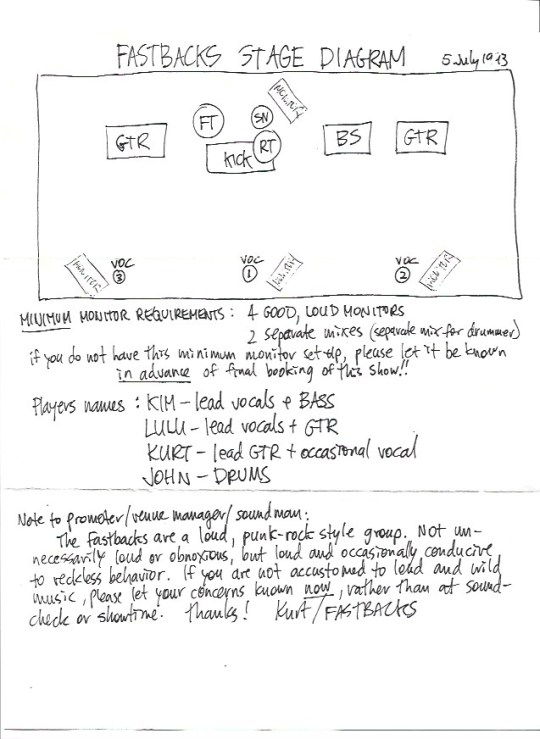
Highly technical and professional stage diagram implorations, Columbus, OH, 1993 show (Courtesy of Bela Koe-Krompecher)
I could be wrong, but you didn’t go over to Europe a lot, did you? Were you able to procure any production work from Euro bands you met whilst on tour there?
Oddly, not a lot of Euro tours… Seems like we should’ve done more, but there was always something. Young Fresh Fellows did some great trips, especially in Spain. Fastbacks Spanish tour was a bit of a dog’s breakfast. Not because of the people in Spain, no sir. We certainly lit it up in Japan once, though!
I did a couple albums for Les Thugs, the French band. One of them in Seattle and one in Angers. May have been bookended with some music travel. It’s amazing to look back at the old calendars and see that between tours with the Fastbacks and Young Fresh Fellows, recording with those two bands and recording other bands. Man, there were times when there was nary a day off, those ‘90s months were packed! Gotta consider myself pretty lucky. And so many killer records I got to be part of.
As a producer, do you feel you are mainly bringing an “ear” to finding the sounds the band wants, or do you try to gently impose a certain style and sensibility over the whole production?
Always try to keep the kickass factor high. I would never try to impose anything other than to try to keep everyone happy so they could do their best work, and not do the same bit over and over and over. Work hard and play hard, but not to overanalyze every little thing. Not under-analyze either, but if it’s killer, it doesn’t matter if everything “lines up” perfectly, or if the choruses speed up a little bit. Try to capture what is great about a band live in concert, and not dilute that if you can help it. Don’t add a bunch of crap just to put your mark on a project.
It's interesting how you professed a love for prog, but you had an innate sense of not always overdubbing too much – note your comment about loving bands that only had one guitar, etc.
The true exciting prog bands started coming out around 1968 and ’69, Yes, Genesis, King Crimson, Van Der Graaf Generator; Pink Floyd and Moody Blues had already been around but maybe weren’t quite included. Recording technique at the time was still fairly straightforward for the most part, there was of course room for overdubbing on an eight-track machine, but most of the first-wave prog bands’ recordings were not overloaded with overdubs. The magic was what they did with their four or five musicians, the arrangements you hear on the record were the same instrumentation as they played live. Some of the songs would have been concocted in a studio, but it wasn’t until later that walls of overdubs became commonplace.
That’s where the greatness of the original bands lies – cool vocal arranging and melding several songs’ worth of ideas into one track. Not a lot of room for squirminess either, it wasn’t so easy punching in on a giant eight-track tape machine in 1968. You made one mistake on that verse? You do the whole thing again!
Okay, gotta ask, with as much exposition as you’d like – what was your favorite recording session(s); and worst recording session(s)?
Pretty much always subverted the disasters. A time or two I told a band, after seeing a live show, that they weren’t quite ready to record yet; play a few more shows and practice a lot, record your practices and actually listen to them constructively. Studio time is expensive, practice time is (or at least was) cheap. You don’t have to have every bit of every song nailed down exactly, but do have most everything pretty well figured out, and be ready for criticism during the recording. If the rhythm isn’t working, be prepared to fine-tune your part so it is; if your harmony vocal is a half-step off, go ahead and adjust!
Some of the great sessions are those where I feel that I learned things, a new piece of gear, a new way of looking at things. Overwhelming Colorfast, Supersuckers, Les Thugs in France, The Meices in Florida… Or the records that just slammed out of nowhere. Devil Dogs, Flop, Supersnazz, Nashville Pussy. So many first albums by bands where they have been playing the songs at shows for a year or two, the tempos are up, the blood is pumping, get rid of the headphones and make it like you’re playing a gig. Play the song three times without stopping. Play three different songs in a row without stopping.
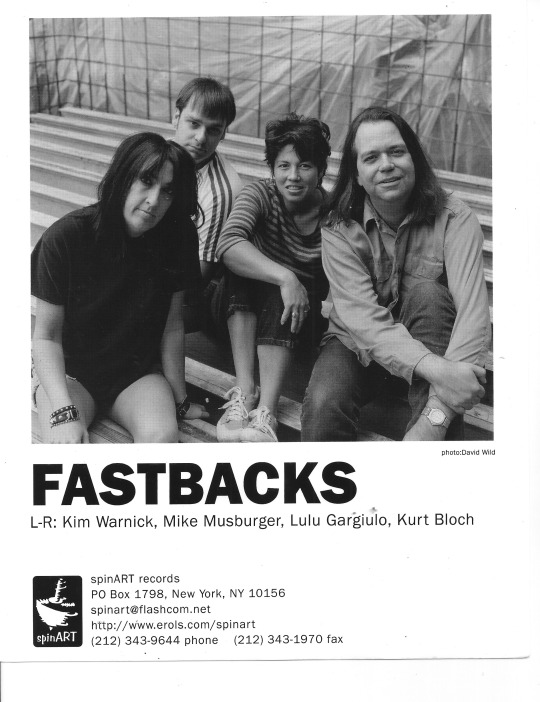
1999 (Courtesy of your's truly)
You’re still actively producing. What have you worked on recently you’d like to highlight? And what’s coming up?
There’s always some great Seattle band records going on – Bürien, 38 Coffin, Once For Kicks, Insect Man, The Drolls, Zack Static. These days, some records take a while to finish, I suppose it’s the nature of the business now. Trying now to clean the slate and get these out the door before starting new ones!
And there’s maybe a new Fastbacks coming, no?
There was no plan of any sort. We were having lunch as we sometimes do, and started talking about a couple songs it would be fun to learn and maybe record. Our pal Joe “Meice” Reineke had recently finished an ambitious and fantastic recording building in his back yard; wouldn’t it be fun to check that out….? Well let’s call him and see what his schedule is. Oh! he’s got a day open, whaddayasay, let’s take it. Well there’s a few other songs we could learn, let’s make it two days… I guess we’d better practice… What if we did enough songs for an album? Maybe we did! Got some band tracks, everyone played their butts off! Now we gotta make more magic. No target completion date nor avenue to release, but everyone is excited to finish it!
------------------------------------
Post Script: This article sprung from an editor at a national mag asking if I wanted to do a story on Kurt Bloch, which of course I said yes to cuz Kurt's a great guy and I've been a Fastbacks fan for a goodly spell. But some months passed and plans changed, and so here it is! Also, I would've put more videos in this piece because the Fastbacks have a ton of great songs, but I guess I just learned there is a 10-video limit for a tumblr post. Who knew?
All images courtesy of Kurt Bloch, except where noted.
#punk#fastbacks#Seattle rock#seattle scene#grunge#1990s punk#1990s rock#1990s#sub pop#nirvana#soundgarden#Kurt Bloch#garage punk#devil dogs#Mighty Joe Vincent#crypt records#Seattle punk#Conrad Uno#Egg Studio#mudhoney#nashville pussy#Presidents of the United States of America#robyn hitchcock#guns n roses#new bomb turks#gaunt#columbus ohio#Youtube
16 notes
·
View notes
Photo
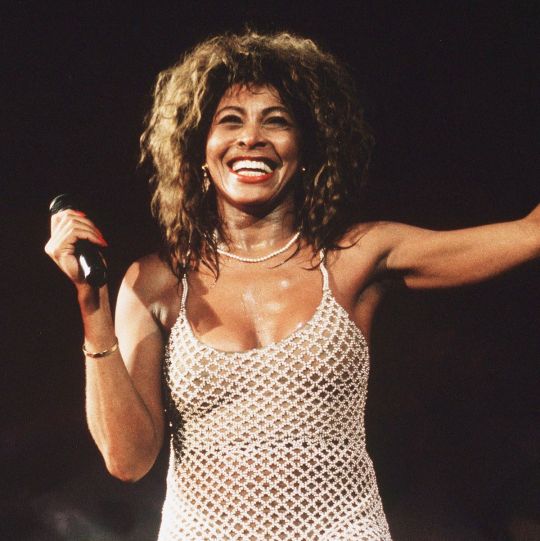
When Tina Turner, who has died aged 83, walked out on her abusive husband Ike in Dallas, Texas, she feared it would spell the end of her showbusiness career. It was 1976, and she had been performing with Ike for two decades, since she had first jumped onstage and sang with his band at the Manhattan club in East St Louis, Missouri. Yet, although she was desperate and had only 36 cents in her pocket, she was on her way to a renaissance as one of the most successful performers in popular music during the 1980s and 90s.
She had to endure several lean years, but a turning point came in 1983, when David Bowie told Capitol Records that she was his favourite singer. A version of Al Green’s Let’s Stay Together followed. Produced by the electro-poppers Martyn Ware and Ian Craig Marsh from Heaven 17, the track went to No 6 in the UK, then cracked the US Top 30 the following year.
Turner cemented the upturn in her fortunes with the album Private Dancer (1984). Driven by the huge hit What’s Love Got to Do With It? (her first American No 1), the album became a phenomenon, lodging itself in the American Top 10 for nine months and going on to sell more than 10m copies. Suddenly Turner was one of the biggest acts in an era of stadium superstars such as Michael Jackson, Dire Straits and Phil Collins.
In 1985 she was recruited to play Aunt Entity in the film Mad Max: Beyond Thunderdome, for which she recorded another international chartbuster, We Don’t Need Another Hero. A second Thunderdome single, One of the Living, won her a Grammy award, and she was an automatic choice to join the Live Aid benefit concert in that year, as well as to participate in its American theme song, We Are the World.
Her follow-up album, Break Every Rule (1986), launched Turner on a global touring campaign, during which a crowd of 184,000 watched her in Rio de Janeiro. The tour spun off a double album, Tina Live in Europe (1988).
The album Foreign Affair (1989) sold 6m copies and generated another trademark anthem, The Best, which was subsequently used to add oomph to numerous TV commercials and adopted both by the tennis ace Martina Navratilova and the racing driver Ayrton Senna. The subsequent Foreign Affair tour ended in Rotterdam in 1990, after which she duetted with Rod Stewart on the old Tammi Terrell/Marvin Gaye hit It Takes Two. Designed as the theme for a Pepsi advert, the track was a chart hit across Europe.
Turner was born Anna Mae Bullock in Nutbush, Tennessee, to Zelma Currie, a factory worker, and her husband, Floyd Bullock, a Baptist deacon. Abandoned by their father and temporarily by their mother, in 1956 Annie and her elder sister, Alline, moved to St Louis, Missouri, where they encountered Ike Turner and his band the Rhythm Kings. After Annie had talked the initially reluctant Ike into letting her sing with the band, he recruited her as one of his backing singers.
It was in 1960 that Tina – who had by then changed her name because it reminded Ike of the cartoon character Sheena, Queen of the Jungle – first sang a lead vocal with Ike’s band. A session singer failed to turn up, and Tina’s stand-in performance of A Fool in Love was a hit on both the pop and R&B charts. Ike immediately rebuilt his act around Tina, and christened it the Ike and Tina Turner Revue. They married in 1962.
Featuring nine musicians and a trio of skimpily dressed backing singers, the Ikettes, the Revue took the R&B circuit by storm. Tina rapidly developed into a mesmerising performer, radiating raw sexuality and bludgeoning audiences with the unvarnished force of her voice. They began to pepper the charts with hits, including I Idolise You, Poor Fool and Tra La La La La, and even if they only intermittently crossed over from the R&B charts to the pop mainstream, the band’s performing reputation was second to none. Evidence of their stage prowess was preserved on the 1965 album Live! The Ike and Tina Turner Show, recorded on tour in Texas.
However, the seeds of the couple’s destruction were being sown in their successful but intense lifestyle. Ike was a habitual womaniser, and also developed a destructive cocaine habit. This provoked violent outbursts against Tina, who, as she later revealed in her 1986 autobiography, I, Tina, was beaten, burned with cigarettes and scalded with hot coffee. She gained a glimpse of what life beyond Ike’s intimidating orbit might be like when she worked with the “Wall of Sound” producer Phil Spector in 1966. To Ike’s frustration, Spector refused to allow him in the studio while he worked on the single River Deep, Mountain High, which subsequently became regarded as a high point of both Spector’s and Turner’s careers.
The Turners’ work won them the admiration of many of their peers, not least the Rolling Stones, who invited them to open a UK tour for them in 1966, then to join them on their American tour in 1969. Mick Jagger was regularly spotted at the side of the stage during Tina’s performances, fascinated by her stage presence and dance routines. One of the high points of Live Aid in 1985 was Tina and Jagger performing together at JFK Stadium in Philadelphia.
Working with the Stones prompted the Turners to import a rock-orientated edge into their work, a ploy that worked most successfully when they recorded John Fogerty’s Proud Mary in 1971. It was their first million-selling single and a Top five hit on the American pop charts. In 1973 they notched up another landmark with Tina’s feisty composition Nutbush City Limits, inspired by her Tennessee origins. She took the role of the Acid Queen in Ken Russell’s film of The Who’s rock opera, Tommy (1975): her performance was one of its few critically acclaimed moments, though her spin-off solo album, The Acid Queen, made little impression on the charts.
After her split from Ike, Tina stayed with friends and was forced to survive on food stamps. When their divorce was finalised in 1978, she preferred to take no money or property from the settlement, to establish a complete break from her husband. She earned cash from TV guest appearances on the Donny & Marie and the Sonny & Cher shows, but her late-70s albums Rough and Love Explosion sold poorly.
In 1980 she signed a management deal with Roger Davies, an Australian promoter working in the US, who secured some lucrative engagements in Las Vegas. The following year the Rolling Stones galloped to the rescue once again by booking her as the opening act on their Tattoo You tour of the US, and she also appeared with Stewart in a California concert broadcast internationally by satellite.
By the time she was inducted (with Ike, though he was then in jail) into the Rock and Roll Hall of Fame in 1991, Turner had little left to prove. She was able to spend more time at the homes in Switzerland and the Cote d’Azur that she now shared with the German record executive Erwin Bach. A singles collection, Simply the Best (1991), reeled in more platinum discs as Turner entered the senior stateswoman phase of her career.
In 1993, as she launched her first US tour in six years, her film biography, What’s Love Got to Do With It, based on I, Tina, was released, starring Angela Bassett as Turner. The film brought forth a bestselling soundtrack album and another hit single with its opening track, I Don’t Wanna Fight.
A three-disc anthology, The Collected Recordings – Sixties to Nineties, appeared in 1994, and the following year came Turner’s recording of GoldenEye, the theme tune of the eponymous James Bond movie. The tour that accompanied her eighth studio album, Wildest Dreams (1996), became another record-breaker, grossing more than $100m in Europe alone. Twenty Four Seven (1999) teed up what Turner announced would be her last major arena and stadium tour. She had intended to tour with Elton John, but the idea was scrapped after she argued with him about the piano arrangement for Proud Mary during rehearsals for a TV special, Divas Live ’99. Her subsequent solo dates became the top-grossing tour of 2000.
A quiet period ensued, during which Turner confined herself to hand-picked events, such as a 2005 performance on the Oprah Winfrey Show. She contributed a version of Edith and the Kingpin to River: The Joni Letters (2007), a tribute album produced by Herbie Hancock. She performed alongside Beyoncé at the Grammy awards in 2008.
That October she went back on the road with the Tina! 50th Anniversary Tour, synchronised with the compilation album Tina: The Platinum Collection. In 2010 she became the first female artist to score top 40 hits in the UK in six consecutive decades (1960s-2010s) when The Best bounced back into the UK Top 10. Her Love Songs compilation appeared in 2014, and her remix of What’s Love Got to Do With It with the Norwegian DJ Kygo in 2020 made for a seventh decade containing UK hits.
Between 2009 and 2014 Turner appeared on four albums by Beyond, an all-woman group formed with her neighbours in Küsnacht, near Zürich. The music reflected the spiritual and religious beliefs of the participants, with Turner considering herself a Baptist-Buddhist (she was raised as a Baptist, but began practising Nichiren Buddhism in 1973).
In 2013 she married Bach and gave up her American citizenship to become a Swiss citizen. Three weeks after the marriage she suffered a stroke, and in 2016 she was diagnosed with intestinal cancer, then suffered kidney failure when “the toxins in my body had started taking over”, as she put it in her second autobiography, Tina Turner: My Love Story (2018). Her husband volunteered to give her one of his kidneys and a transplant operation was carried out successfully in 2017.
The following year, the biographical stage musical Tina opened at Aldwych theatre in London, directed by Phyllida Lloyd and starring Adrienne Warren in the title role. Turner received a Grammy lifetime achievement award, to go with her existing tally of eight Grammy awards and three Grammy Hall of Fame awards. Among her vast collection of honours, Turner also had five American Music awards, two World Music awards and three MTV Video Music awards.
In 2021 she joined the Rock and Roll Hall of Fame as an outright solo performer and sold the rights to her music catalogue to the publishing company BMG for an estimated $50m. Ready to retire fully, she bade farewell to her fans with the two-part HBO documentary Tina.
Alline died in 2010. Tina’s eldest son, Craig, from a relationship with the saxophonist Raymond Hill, took his own life in 2018. Ronnie, her son with Ike, died in 2022.
She is survived by Erwin and two sons, Ike Jr and Michael, from Ike’s first marriage.
🔔 Tina Turner (Anna Mae Bullock), singer and songwriter, born 26 November 1939; died 24 May 2023
Daily inspiration. Discover more photos at http://justforbooks.tumblr.com
82 notes
·
View notes
Text
excerpt from article about sarah polley and her experience as a child actor
Almost twenty years ago, Polley considered making a documentary about former child actors, and interviewed several adults who, like her, had been stars in grade school. In 2011, Polley told me, “My memory—and it’s a genuine memory—is that I really wanted to do it as a little, little kid, and that my parents were jaded about the industry, and they knew better and resisted, but I had a will of steel and forced my way into it.” All her interview subjects had told the same story, she explained: “There’s not a single child actor you’re going to meet who’s going to say, ‘My parents pushed me into it’—even if they have terrible stories about their parents being stage parents. Shirley Temple, who started when she was a toddler, insisted that she forced her way into this. I frankly don’t believe it. And so, if I don’t believe their stories, why do I believe my own?”
Indeed, Polley’s family history belies the notion that she chose to act professionally. John Buchan, Polley’s brother, the second of two children from Diane Polley’s first marriage, told me, “We were all child actors. We can all find pictures of ourselves with our names and the color of our eyes and a phone number listed on the back.” Buchan did a little TV work, as did their sister Joanna and their brother Mark. “But, with Sarah, she hit the big one,” Buchan said.
Polley started acting at the age of five, appearing in a live-action Disney movie, “One Magic Christmas.” She was subsequently cast in many television roles, including a stint as Ramona Quimby in a series adapted from Beverly Cleary’s novels. In 1988, when Polley was nine, she played Sally Salt, the diminutive sidekick of the eponymous antihero of “The Adventures of Baron Munchausen,” a zany spectacular written and directed by Terry Gilliam, of “Monty Python” fame. Gilliam was an idol to Polley’s parents—particularly her father, Michael, who was born and raised in England.
The shoot took place largely at Cinecittà Studios, in Rome. Polley has happy memories of the city: she and her parents ate dinner every night on the Campo de’ Fiori, where she sometimes joined in with a band of roving musicians performing for tourists. The set, however, was often chaotic—and scary for a child. In one scene, she had to run through a mockup of a war-torn city as bombs exploded. The first take was terrifying enough to convince Polley that the detonations had gone awry; she ran straight into the camera, ruining the shot. For the second take, she was so frightened that she ran too fast, again rendering the scene unusable. In “Mad Genius,” an essay in her book, she writes, “I sobbed in my father’s arms in between takes and pleaded with him to intervene, to ensure I didn’t have to do it ever again. But when an assistant director came over to say they needed another take, my father said, with genuine remorse, ‘I’m afraid they have to do it again, love. I’m sorry. There’s nothing I can do.’ ” (Gilliam has said that, even if the set felt dangerous, it wasn’t.)
There were moments during her career as a child actor when adults, rather than just overlooking her vulnerability, appeared to cynically exploit it. Polley had only recently started work on “Avonlea” when her mother died—a tragedy for which, she says, she was entirely unprepared. (In her memoir, Polley writes with candid self-awareness of the gratification she took in being the pitiable child of a mother with cancer while at the same time being certain that her mother would recover.) During the show’s second season, Polley, who played a character named Sara Stanley, was presented with a scripted monologue in which her character cries over her mother’s death; unsurprisingly, she delivered an utterly persuasive performance. But the experience of this scene and others in which her character recalled her mother derailed Polley’s ability to mourn. “Because some of the first tears I shed about my mother’s death after the day she died were in aid of a performance, I was unable to produce genuine tears of grief for years to come,” she writes. In the aggressively wholesome world of “Avonlea,” which was made by Disney, Sara Stanley comes across as singularly sad, gaunt, and complicated.
Polley’s account of her life as a child performer—of being locked into extended contracts, and working “crushingly long” hours, and being beholden to adults whom she didn’t want to disappoint—raises disquieting questions about the ethics of having children act for commercial gain. Polley’s experience also underscores the fact that a child’s sense of volition—both in the moment and retrospectively—can be an expression of the sublimated desires of parents or other authority figures whom the child is eager to please. (The family, no less than the patriarchy, involves a structural imbalance of autonomy.) When Polley meets stage parents who insist that their child wants to perform, she replies, “Yes—and lots of kids want to be firefighters and doctors, too. But they must wait until they are no longer children to assume the pressures and obligations of adult work.”
sarah polley profiled by rebecca mead in the new yorker, nov 14 2022
323 notes
·
View notes
Photo

TINA TURNER (1939-Died May 24th 2023,at 83).American-born and naturalized Swiss singer, dancer, actress and author. Widely referred to as the "Queen of Rock 'n' Roll", she rose to prominence as the lead singer of the Ike & Tina Turner Revue before launching a successful career as a solo performer.Turner began her career with Ike Turner's Kings of Rhythm in 1957. Under the name Little Ann, she appeared on her first record, "Boxtop", in 1958. In 1960, she debuted as Tina Turner with the hit duet single "A Fool in Love". The duo Ike & Tina Turner became "one of the most formidable live acts in history".They released hits such as "It's Gonna Work Out Fine", "River Deep – Mountain High", "Proud Mary", and "Nutbush City Limits" before disbanding in 1976.In the 1980s, Turner launched "one of the greatest comebacks in music history".Her 1984 multi-platinum album Private Dancer contained the hit song "What's Love Got to Do with It", which won the Grammy Award for Record of the Year and became her first and only number one song on the Billboard Hot 100. At age 44, she was the oldest female solo artist to top the Hot 100.Her chart success continued with "Better Be Good to Me", "Private Dancer", "We Don't Need Another Hero (Thunderdome)", "Typical Male", "The Best", "I Don't Wanna Fight", and "GoldenEye". During her Break Every Rule World Tour in 1988, she set a then-Guinness World Record for the largest paying audience (180,000) for a solo performer.Turner also acted in the films Tommy (1975), Mad Max Beyond Thunderdome (1985), and Last Action Hero (1993). In 1993, What's Love Got to Do with It, a biographical film adapted from her autobiography I, Tina: My Life Story, was released. In 2009, Turner retired after completing her Tina!: 50th Anniversary Tour, which is the 15th highest-grossing tour of the 2000s. In 2018, she became the subject of the jukebox musical Tina.Having sold over 100 million records worldwide, Turner is one of the best-selling recording artists of all time. She has received 12 Grammy Awards, which include eight competitive awards, three Grammy Hall of Fame awards, and a Grammy Lifetime Achievement Award. She is the first black artist and first woman to be on the cover of Rolling Stone. Rolling Stone ranked her among the 100 Greatest Artists of All Time and the 100 Greatest Singers of All Time.Turner has a star on the Hollywood Walk of Fame and the St. Louis Walk of Fame. She has twice been inducted into the Rock and Roll Hall of Fame, with Ike Turner in 1991 and as a solo artist in 2021.She is also a 2005 recipient of the Kennedy Center Honors and Women of the Year award.https://en.wikipedia.org/wiki/Tina_Turner
#Tina Turner#American Musicians#Musicians#Music Legends#Notable Deaths in 2023#Notable Deaths in May 2023#What's Love Got To Do With It#We Don't Need Another Hero#Ike & Tina Turner
116 notes
·
View notes
Text
Poe backstory headcanons, and other shit. BSD
* David Poe, Jr. And Elizabeth Arnold Hopkins Poe, were not the best of parents. David had never really cared about being a parent. No he spent most of his time at local bars. Drowning his sorrows in alcohol, and avoiding thinking about his failing acting career, by starting bar fights and making advances on the women there. When David finally did get home, he would be a drunken mess. So irritable that if one just made the slightest miss step, he would all over them screaming and yelling till one's ears bleed. Sometimes even bottles were thrown. Elizabeth was a traveling stage actress, and a very good one at that. But Elizabeth was what people call a narcissist. To her, her children was an extension of herself, and they had to be perfect. Elizabeth would often start fights with her husband due to his drinking, these fights would rarely end well. But despite their fights Elizabeth would always pretend as if everything was fine in her family to keep up the image of a perfect family, bruises from her last fight with David? Make up. Edgar got caught sneaking into the police station? Oh why officer thank you for catching him. He is truly a troublemaker, I will make sure to punish him accordingly. Her opinion of her children depended on how good they were, and how much they complied to her wishes. Henry was the golden child. The one that did what she said and did well in school. Edgar was a troublemaker however. Never home. Always outside at the library, or god forbid a crime scene. Edgar was her least favorite child, and by extent the least favorite child. To her Rosalie was just there.
* William Henry Leonard Poe was born in january on the 30th in the year 1985, in Boston Massachusetts. Henry was the golden child, always obedient never stepping out of line, he did good in school, always number one in every activity. Henry always helped his mother with everything she asked, helping her put on her make up after David got aggresive, or cooking. Henry was the perfect son. Henry was almost always at odds with his brother, arguing with him about never being home, his hobby of finding and analysing crime scenes, and his lack of respect for their mother even though she does so much for them. After Elizabeth got tuberculosis Henry was sent to live with his grandparents, David Poe, Sr. And Elizabeth Cairnes Poe.
* Rosalie Mackenzie Poe was born on the 8th of december 1988, in Norfolk, Virginia. Rosalie was always a quiet child. She stayed in the background and just did what was asked of her. Never directing any attention to herself. She followed her mothers instructions, and hid whenever there was a fight. She didn't really have a close relationship with either of her brothers. Henry was always busy doing homework, studying, and helping mom with whatever, and Edgar was never really home, and when he was he would mostly lock himself in a closet, and write and draw whatever crime scene he found, or new a idea he had, that or he was getting yelled at. She doesn't really think she wants to hang out with him anyway, he was cool and all, but too morbid. When their father disappeared she wasn't that sad, she did grive but it was more of the idea of a father she was sad about losing, not really the man himself. And when their mother died of tuberculosis on her birthday, she was sad for the lose of the hope of her mother becoming better. She was eventually taken in by the Mackenzies. They were a lot better then her original family, her new parents actually care for her. She also lived in the same city as Edgar, though she still didn't see him much.
* Edgar Allan Poe was born on the 19th of january 1987 in Boston Massachusetts. If you had asked the people who had interacted or been around Edgar what they thought of him, they would have probably said they thought that he was creepy, macabre, morbid, dubious, grimy, sketchy, some of folk might even have used the terms retarded, or psycho. Not all of them are wrong of course. Edgar is a creepy kid, and he had always been very morbid. That being said however he was also very smart, while his classmates were just learning to read and write, Edgar had already learned to do so at the age of four and a half, with some help from a nice librarian. Since then he has read many books, mostly one's on psychology, engineering, criminology and everything that included, and of course mystery and horror novels. You see Edgar loved the macabre, he adored the mysterious and the stange, whether that be the paranormal, the existential, that of the mind, or simply people, he loved the macabre and all it's flavors. He also liked guessing why people would do the things they did, why they feared the things they did, especially when it came to criminals, there were just so many reasons, to him it was all just so fascinating. In short Edgar loved to study fear psychology. Edgar wasn't really home a lot, he’d rather spend his time in a library reading books, or breaking into a police station or crime scene to find more cases to solve, and motives to figure out, then be home and getting yelled at. To Edgar solving cases and the like came naturally, in his head sorting though the evidence and possible motives was as easy as breathing. It was also very easy for him to find these crime scenes because of his engineering hobby, when ever they moved to a new city Edgar would simply steal a radio off one of the police officers and modify it to pick up on any and all signals coming from the station, not just signals directed at it and emergencies, he never got caught. Edgar would also find cases (and info he needed) from breaking into the police station, he only got caught once, never again. When Edgar wasn't reading or solving cases he was writing. Edgar would write short stories and poems about mystery and horror, he would sketch out crime scenes and monster ideas, and he would write stories and plots, most of which were either in the horror genre or mystery genre, he did do some lighter genres but not a lot of the time. Edgar would often go into a closet or small room to write in when he was home, it just made him more comfortable. Most of the time when Edgar wrote it would be at night, when most of the other people were asleep. Edgar was a very lonely kid, due to his hobbies noone really wanted to hang out with him, and his family doesn't really like him either, not to mention he is so above everyone his age in intelligence, but well he didn't really like crowds anyway. After his father went missing Edgar didn't really Care much, he had never liked his father anyway. After the death of Elizabeth Edgar was in the foster system for sometime before being taken in by the Allans in March of 1995 on the 13th.
* there are very few people that know what happened to David Poe Jr. some others suspect it, but they can't be sure. On june 15th 1994 David Poe Jr. Had come home really late in the night. Noone in the entire house was awake except one person. As David Poe walked though the hall to the bedroom he heard scribbling coming from a little side room in the hallway. The noise irritated the middle aged man. He slamed the door open, and in that little room was a little boy scribbling away in a notepad. David yanked the notepad out of the little boys hands. He looked down at the notepad, and he without thinking read a word. Edgar in a panic subconsciously pulled him into his ability, and then he was gone. Dispite the ruckus that night everyone slept like a rock, except for Edgar. As Edgar climbed into his bed, his lips were tucked in a small smile. David Poe Jr. Died on June 15th 1994, in a poam with no name. The page the poam was on was later burned on June 15th 2007, on Mt. Taurus. Edgar doesn't really feel gulity.
* America needed more ability users. America had plenty of people, and by extension plenty of soldiers. What they didn't have plenty of were ability users. Yes they did have some, and some of those ability users were soldiers, but a lot of them also weren't. Some of those ability users abilities simply weren't that useful, or they would be to great of a cost to use, like that kid from St. Paul, Minnesota, he had a very useful gift, however that gift traded money for strenght, and at this time of war, the usa simply couldn't risk losing that much on what was just one soldier. At this point in time the government and military really didn't care if the ability user was an adult or child, as long as the ability was useful. John Allan would be the one to bring them a useful ability user.
* John Allan was a smart man, I mean he somehow dealt with drugs right under the militaries nose, so that should count for something right? The military had ordered all officers to be on the look out for potential ability users. For while they did have a system to keep track of them, there could be a lot that aren't in the system. John had his eyes on his new foster son, Edgar Poe. The kid was quiet, and flinched whenever he got yelled at, not to mention the fact that he obviously didn't trust them. Whenever he was in the house, he would always seek out a small dark room or closet. John had seen some of the things he wrote and drew, and the kid was morbid. That however wasn't John's priority, no his priority was that the kid was smart, a genius if John said so himself. The kid turned 8 years old just about Four month's ago, give or take maybe a few weeks or days, yet he could already read, understand and apply, advanced psychology, engineering, architecture, sociology, and criminology. John was going to take the kid in, no matter what, he however had to check if the kid was an ability user. at the end of april John took Edgar to the new military base stationed in richmond. The government had, had new military bases stationed in every city. They were used to identify abilities and ability users, as well as test the limits of said abilities. As it turned ok Edgar did have an ability, and a very powerful and useful one at that. After Edgar admitted to having an ability, the officers at the station were quick to get it tested, and it was perfect, an ability that could suck anyone into a fabricated reality, created though a piece of text, it didn't matter on what or where it was written, all it had to be was a somewhat coherent piece of text and it would work, it didn't matter if it was written as a book or poem. There didn't necessarily have to be a way out either, of course you could create one or two if you'd like but it wasn't a condition. You could choose rather if the person died in the story they would also die in real life or not. The conditions of the world was completely up to the user. The best part was it didn't have to be the user that was Holding or useing it, it could be used by anyone, as long as the owner of the ability allowed it.
* Frances Allan adored Edgar, sure he was quiet and if she was being honest quite morbid, but that didn't matter to her, no all that mattered was that Edgar finally met her husbands standards, so of course she would try her hardest to get to know him. So from the 13th of march to the 30th of april, Frances did all she could to get to know the boy, she would ask him if she could see some of what he wrote and drew, though his works were quite scary and macabre, and sent a chill down her spine, they were also quite good and she tried her best to encourge him to continue his passions. She would purchase him all kinds of books, she took note that Edgars favorites seem to be (to no one's surprise) the horror and mystery novels she got him, and to her surprise he also seemed to favor some of the sci-fi, fantasy, and comedy books. Of the educational books he favored those about psychology, criminology, sociology, engineering, and architecture, she had brought him some more advanced books on these subjects because Edgar was far above most when it came to Intelligence. She gleefully took note of which subjects and genre's Edgar seemed to like and dislike, it was worth every penny spent to see that gleeful look on his face and shine in his eyes, as he read. When Frances noticed Edgar take an interest in her piano she was delighted, this was an activity they could do together, a chance to get closer to her soon-to-be son. And so Frances sat Edgar down and began teaching him how to play piano, and oh did Edgar love it, he looked so gleeful as he sat there, hands sliding over the over the keys of the piano, clumsily at first but over time he began getting the hang of it. Frances almost cried when her sweet little Edgar first hugged her. Oh but then John came with the terrible news that Edgar was to be drafted and trained to go to war, she protested, of course but they said his ability was to good to just let go.
* Frances had always wanted children, but she was unfortunately infertile, this however didn't stop her from wanting kids. So they had become a foster family so she could adopt one of the kids, they had, had two before Edgar, but they didn't meet his standard, if he had to have a kid it at least had to be smart. John didn't care about kids outside of getting an heir, however being a foster parent also, allowed him to scout out the children, for possible ability users. When Edgar was sent to be trained Frances did the best she could to make sure he was comfortable, she sent him letters every other day, she also made sure to send him books, notepads, and pencils, to make sure he could still read, draw, and write, she even visited him.
* and so on May 1st Edgar was sent out to train for the military. They started with basic combat and strenght training, but it quickly got harder after that. He was taught how to assemble and disassemble a sniper in under half a minute, he was taught where to hit a target depending on the situation, he was taught how to walk around without making a sound, he was taught everything he needed to go to war. Edgar was to be assigned a special forces unit. Edgar had already went though the basic training, now it was time for special forces training. On the 19th of January 1996 Edgar officially became a part of the special forces.
* his favorite weapons were guns and knives, he even started a knife collection which he still has to this day. He never goes outside without a knife, sometimes even a gun.
* After the great war finished Edgar was about 13 to 15 years old. while Edgar was still a part of the special forces after the war, he was a lot more focused on his education. It was very easy to catch up and go beyond people his age, mostly because he was already far above people his age when he was 8 years old. Edgar of course went to a military highschool where he might have been a bit of a troublemaker, okay who am i kidding he had no respect for authority. Other students would pay for him to do their homework. If someone annoyed him it was very likely that he would pull some kind of prank on them, the worst part is he always got away with it. Edgar has anxiety, but one thing he takes pride in is his intelligence. When Edgar becomes comfortable with a group he can become kind of unhinged, he also has people pleaser tendencies when he really cares about someone, he is just very afraid of losing them.
* Edgar left the military to become a detective in June 2007, which would make him a college drop out because he was attending West Point at the time. Edgar did very well as a detective, he was the departements best. Then Ranpo came along, when Ranpo solved that case the answer was on the tip of Edgar's tongue, but Ranpo was faster in his deduction. Edgar left the police and became a part of the guild, he needed to beat Ranpo, he couldn't just torture him with a horror book or something like that, no he needed to outsmart him. Found Karl along the way.
* dates. William Henry Leonard Poe was born on the 30th of january in 1985. Edgar Allan Poe was born on the 19th of january in 1987. Rosalie Mackenzie Poe was born on the 8th of december 1988. Elizabeth Arnold Hopkins Poe died of tuberculosis on the 8th of december 1994. David Poe, Jr. Was declared missing on the 22nd of June 1994 by some bar buddies. David Poe, Jr. Died on the 15th of June 1994. Edgar Allan Poe was taken in by the Allans in March 13th 1995, and was taken to the military to check if he was an ability user on the 30th of April 1995. Edgar Allan Poe began military training on the 1st of May 1995. Edgar began in the millitary on the 19th of January 1996. Edgar Allan Poe left the millitary to work as a detective on the 1st of June in 2007. Edgar Allan Poe burned the poam his father died in, on the 15th of June 2007.
* Edgar's opinion on other members of the guild: F. Scott Fitzgerald: as long as he doesn't stick his nose in his business then he's fine. Doesn't like how uncaring he is towards the poor, but does like how attentive he is towards his wife. Herman Melville: he likes him. He respects his devotion to his ship and the guild, as well as his competence. H. P. Lovecraft: he likes him. He thinks he is great inspiration for writing, and has followed him around a few times. If Edgar wasn't focused on other things, then maybe he would have tried to make friends with him. Overall he finds him very fascinating, as he does most things macabre. James L: doesn't really care. John Steinbeck: He likes him. He respects his devotion to his family and cunning. He likes how easygoing he is, it makes him easier to be in a room with. Lucy M. Montgomery: he likes her well enough. He doesn't pity her out of respect. Lousia May Alcott: as a fellow wallflower he likes her. He hasn't really talked with her a lot, since she mostly only talks to fitzgerald, but if he hadn't been busy planning revenge he would have probably tried to befriend her. Margaret Mitchell: he knows she has a softer side, yet he still doesn't really care for her all that much, mostly finding her irritating for how often and how often she underestimates her opponents(I personally like Margaret btw, she is awesome). Mark twain: he actually really likes him, he finds him cheerful and appreciates his effort into trying to befriend him, maybe if he hadn't been so focused on revenge he would have agreed. Thinks his marksmanship is very good. Once showed him his knife and gun collection. Nathaniel Hawthorne: he finds him obnoxious.
* Edgars mansion has a bunch of different hidden passege ways, rooms, and mechanisms where he hides all kinds of stuff, most notably his knife and gun collections.
* Edgar has some mental illnesses here is a list: anxiety, depression, PTSD, Autism. He May or May not have BDP or Bipolar, seriously i don't know if he does, and if he does which one.
* Edgar is actually really hard to scare, outside of his social anxiety and slight fear of abandoment and judgement, and trust issues… and heights, it is really hard to scare him, like you could put on the scariest horror movie or book and he will only find it fascinating. He loves horror and all, but he is really hard to scare, and he is so fucking macabre. He is also really hard to disgust, like he has watched the entire disturbing movie iceberg and more, this man can watch slow torture puck chamber and all it's sequels with a straight face, he HAS watch the entire franchise with a straight face.
* He pranks people that annoy him, and people that he dislikes. Hawthorne has been the victem of so many pranks by now(it is a non-confrontational way of getting revenge, and this man holds grudges)
* He is a beast online, i mean what introverted person isn't?
* He is actually really good at psycho analysing people
* He doesn't trust his own judgement when it comes to Ranpo, he knows he is smart but Ranpo beat him and he doesn't want to face that judgement again.
* Edgar is not oblivious, he can see Ranpo's feelings for him crystal clear. He just doesn't know how to feel about it, he's just afraid of vulnerability, especially to a guy he hates(d?), plus he himself has some very conflicting feelings about him.
* Edgar has been practising piano because of his adoptive mother.
* Frances is dead
* Edgar is jealous of Ranpo, no it was not love, now he is jealous of Ranpo but also inlove with him and he doesn't know what to do or how to feel.
* Edgar can see when Ranpo is trying to hide his emotions, he knows Ranpo is afraid, he doesn't bring attention to it however, but he knows, and he will help in whatever way he can
*Edgar doesn't just have a lot of IQ, he also has a lot of EQ.
*Edgar doesn’t have a lot of connections in his life so he is very attached to Ranpo, to the point it is unhealthy. When he hated him his anger and spite was what got him through the day. He still uses some of that anger and spite to get through the day.
*how Edgar looked though out his life. When he still lived with his biological parents he mostly wore oversized sweaters, and worn shorts or jeans, plus his og hairstyle. When he began living with his adoptive parents he wore more casual formal clothes, plus his og hairstyle, however Frances would sometimes try to get at least one side of it behind his ears. When he was in the military he wore more tactical clothing, and he had a military haircut. When he got out of the military he grew his hair back out and started wearing lighter clothes.
Feel free to use. This isn't theory this is headcanon, just to make that clear.
#bungou stray dogs#bungo stray dogs#bsd#poe bsd#bsd edgar allan poe#bsd poe#ranpo edogawa#ranpoe#bsd ranpo#edogawa ranpo#edgar allan poe bsd#edgar allan poe#bsd headcanons#bungou stray dogs headcanons#the guild#bsd the guild#lovecraft bsd#bsd twain#bsd louisa may alcott#bsd lucy#bsd lovecraft#bsd steinbeck#bsd francis#fanfiction inspiration#fanfic inspo#bsd melville#bsd ranpoe#ranpo bsd
46 notes
·
View notes
Text
A new DT thing for me to pursue...i.e., I Love it When My Brain Does a Weird!
So back in 2021, a book called Royal Conservatoire of Scotland: Raising the Curtain was published by Luath Press Ltd. It was researched and written by my friend Stuart Harris-Logan, the Keeper of the Archives at the Royal Conservatoire of Scotland/RCS (previously the Royal Scottish Academy of Music and Drama/RSAMD). I was honored to work alongside Stuart in the RCS archives for a time in 2019 during my tenure as a student archivist at the University of Glasgow.
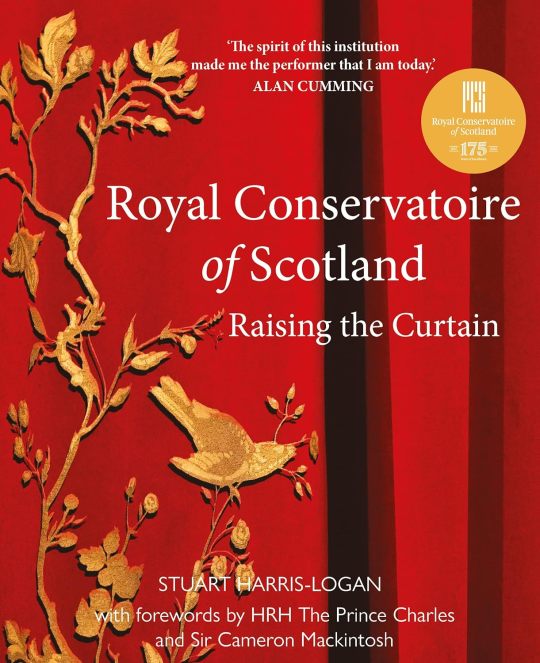

I recommend this book wholeheartedly if you're interested in the history of the RCS. It's a great read! It contains spotlights on many former RCS students who've gone on to become successful in their fields (including Sam Heughan, Ncuti Gatwa, Richard Madden, James McAvoy, etc.) and - of course! - has a small spotlight on David Tennant as well. It's only a few pages long, but it contains quotes from a sit-down interview David did called 'Conversations at the RCS with Andy Dougan' on 4 July 2016, when David was there to receive his honorary Doctorate. This interview was recorded and is housed at the RCS Archives. It was intended for RCS acting students and therefore spent a lot of time focusing on David's years at the school (a particular thrill of mine!) so of course I've seen it; alongside David's brilliant and engrossing 2016 SAG-AFTRA interview - which I was in the audience for! - this RCS interview remains one of my favorite interviews with David.
Raising The Curtain also contains this fabulous matriculation photo of a very young David (around age 11), taken in 1982 upon his entrance into the RCS (then RSAMD) Junior School. He's said before he hated his glasses when he was a kid, and by the looks of his expression in his picture, it definitely seems like he didn't want his picture taken! (For those of you who don't know what the Junior School did, I've included this little explanation from the 9 March 1988 edition of the Glasgow Herald.)
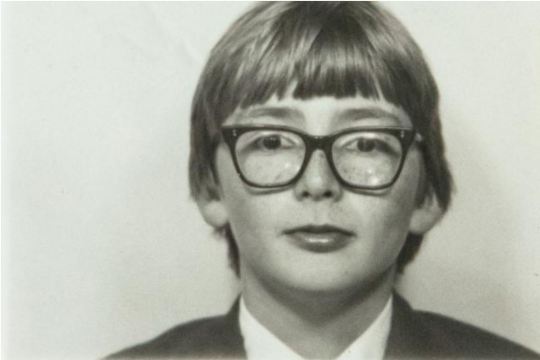

During the course of the RCS interview I mentioned previously, David speaks about how important getting involved with the Junior School program was to him. Quoting the interview from Raising The Curtain, David says the following:
"I came from a background where nobody really knew how you go about becoming an actor. I mean, we were aware that there was the Athenaeum as it was then, so we sniffed around and found out there was a Saturday morning class called the Junior School which you could come to and do classes. I later found out that it was run by the students and it was part of the BA Acting course. At the time, I just thought I was going to a Saturday morning drama club, and I did that every year until I left school and came here as a full time student."
Upon reading this, my brain did a Weird (a phenomena I affectionately call my "DT Spidey Sense") and it began to prickle. Given my extensive research into David's early career - which heavily focuses on his time at drama school - I know during his years as a BA Acting student, it was part of his last year's coursework requirement to help teach and direct Junior School participants in at least one production (so yes, if you've ever wondered if DT directed anything, well -- you heard it here first!)
Now here's what I noticed. In 1984 and 1985, there was a 3rd Yr. BA Acting student who was attending the RSAMD/RCS. He would've been required to teach Junior School students as part of his coursework, and direct the Junior School students in a few plays. That student was Alan Cumming.
As previously noted, David began Junior School in 1982 and continued until he enrolled as a full-time student in 1988, so David would've been in the program at the time. So...is it possible to confirm Alan taught a very young David Tennant?
I'm in the process of pursuing an answer!
40 notes
·
View notes
Text

Today In History
Mary Wilson, was an amazing singer, businesswoman, author, lecturer, actress, and a founding member of The Supremes, the most successful Motown act of the 1960s was born in Greenville, MS, on this date March 6, 1944.
The Supremes is the best-charting female group in U.S. chart history, as well as one of the best-selling girl groups of all-time.
Wilson later became a New York Times best-selling author in 1986 with the release of her first autobiography, Dreamgirl: My Life as a Supreme, which set records for sales in its genre, and later for the autobiography Supreme Faith: Someday We’ll Be Together.
Continuing a successful solo career and concert performer in Las Vegas, Wilson also worked in activism, fighting to pass Truth in Music Advertising bills and donating to various charities. Wilson was inducted along with Ross and Ballard (as members of the Supremes) into the Rock and Roll Hall of Fame in 1988.
CARTER™️ Magazine
#carter magazine#carter#historyandhiphop365#wherehistoryandhiphopmeet#history#cartermagazine#today in history#staywoke#blackhistory#blackhistorymonth#mary wilson#the supremes
23 notes
·
View notes
Text
diana <3

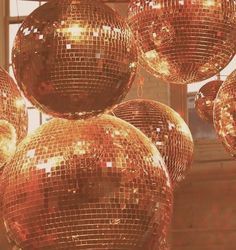



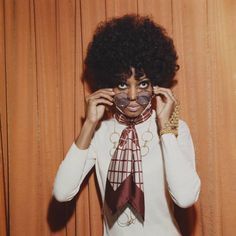
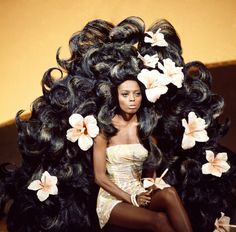


diana ross is an american singer and actress, the former lead singer of the supremes- one of the best selling girl groups in the world. she has 6 no.1 songs, a succesful career in films, the presidential medal of freedom and the kennedy center honors.
growing up diana wanted to be a fashion designer and took courses in millinery, clothing design, pattern making and tailoring. on evenings and weekends she took courses in modeling and cosmetology. she was heavily involved in school and clubs such as the swim team.
at 15 she joined a group called the primettes, and they auditioned to be signed to motown, but were told they had to graduate high school first. the group continued to come to the studio and did what they could to help other artists. in 1960 diana was hired to be detroit's first african-american bus girl, and she began working in a hairdressing salon. she graduated from high school in 1962.
when the group was signed they were re-named and called the supremes. the supremes are stil the best charting girl group ever, with 12 no.1 hits. their song "where did our love go" was transmitted to astronauts during the 1965 Gemini 5 mission. diana made her last appearance with the group in 1970.
she had a succesful career as a solo artist and was the first african american woman to co-host the academy awards. in terms of acting diana was nominated for the saturn award and golden globe award. she's been in tv spanning from 1964 to more recently in 2018. in total she's had 18 no.1 hits- 12 from the supremes and 6 from her solo work. she's continued to inspire big artists, and the supremes were added to the rockn roll hall of fame in 1988.
41 notes
·
View notes